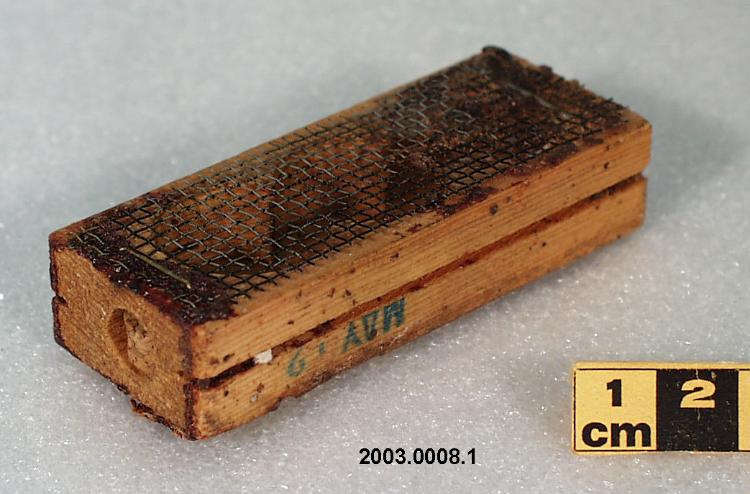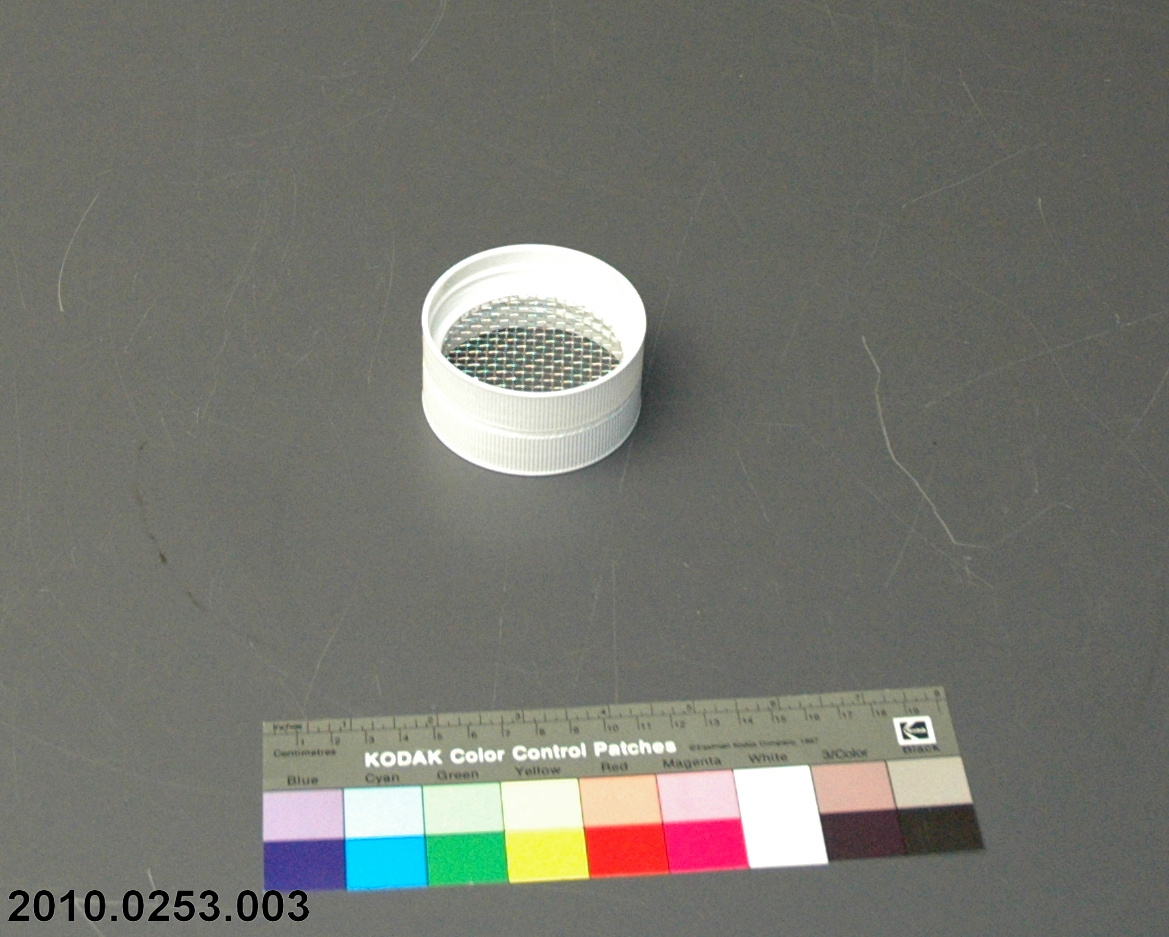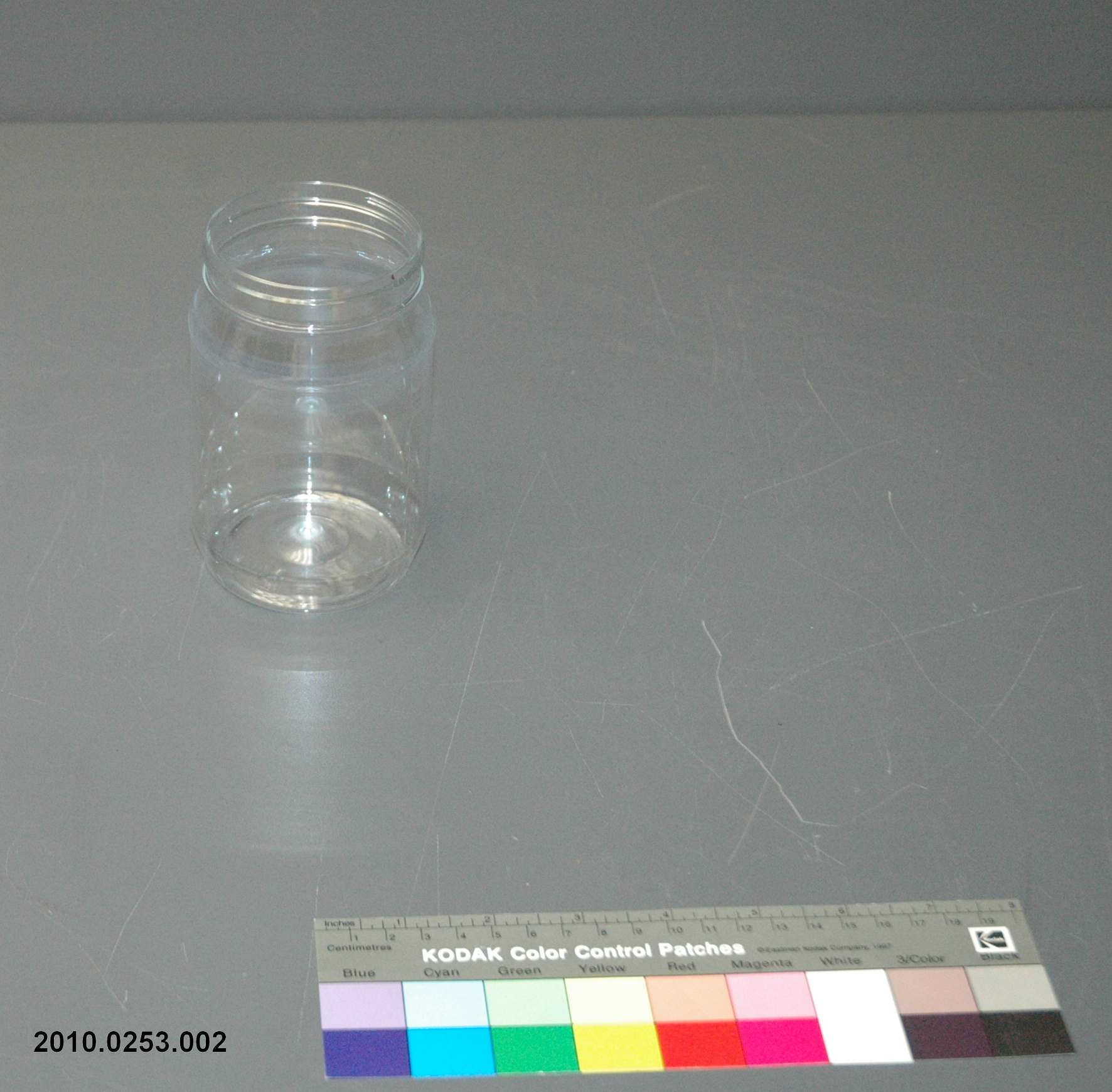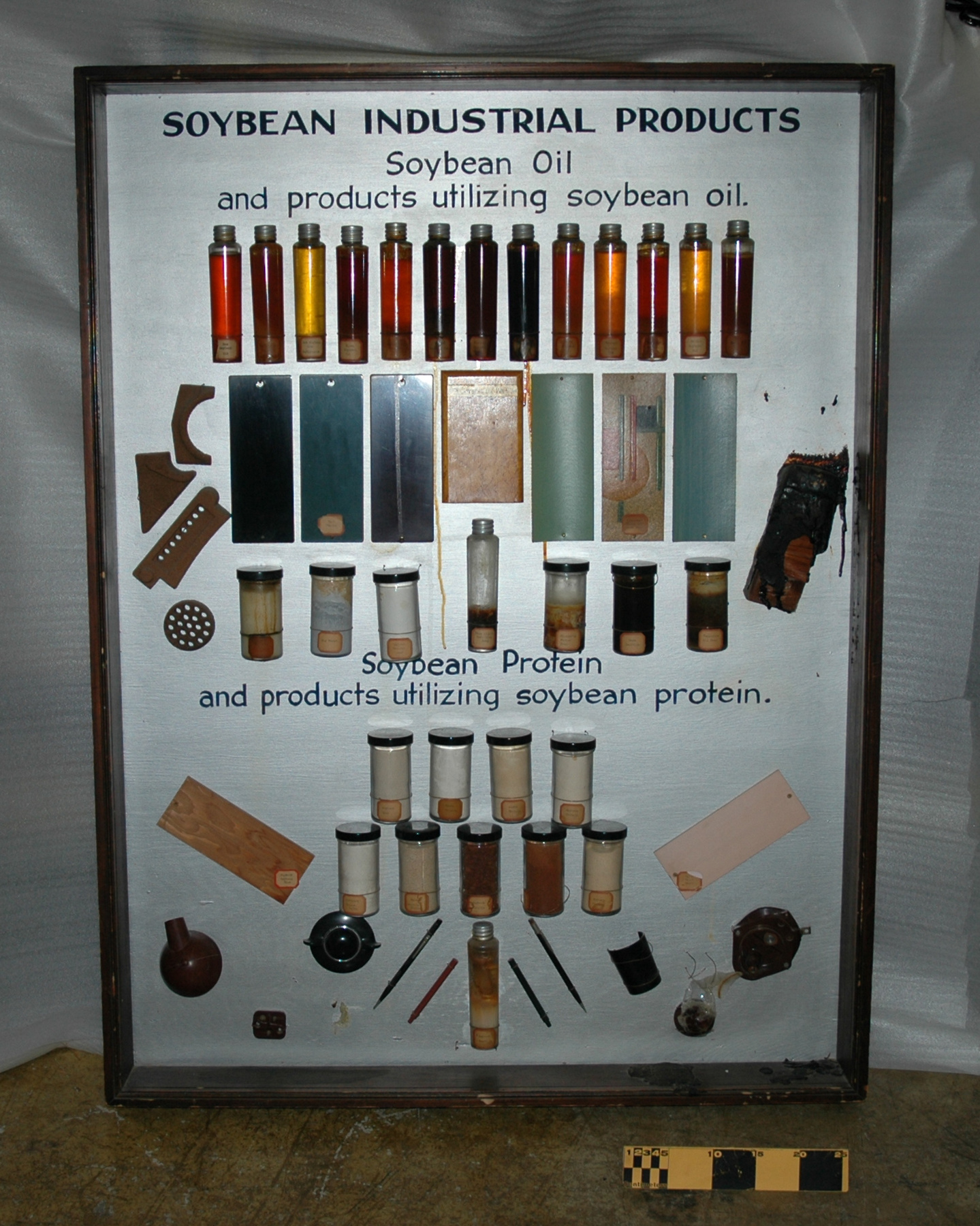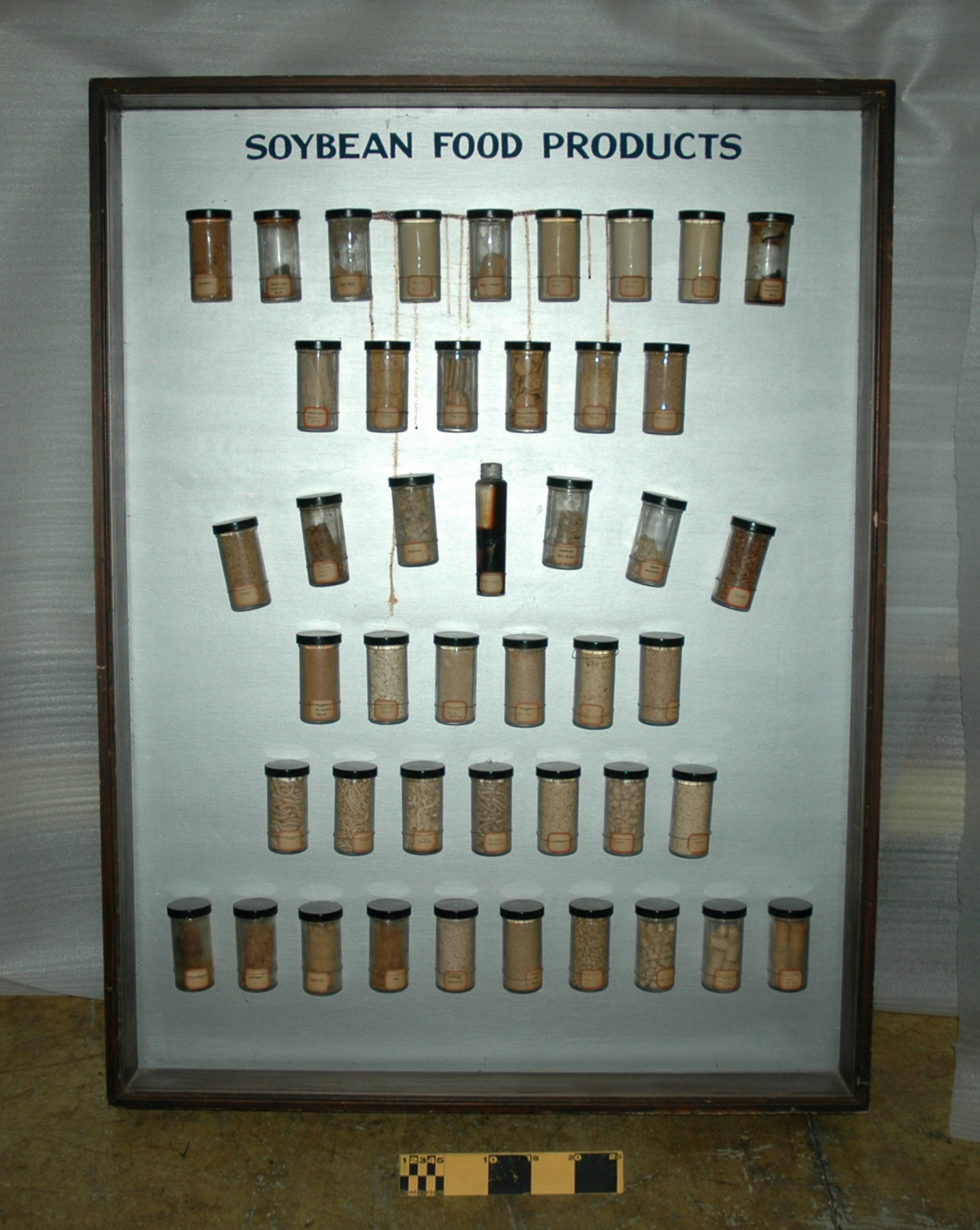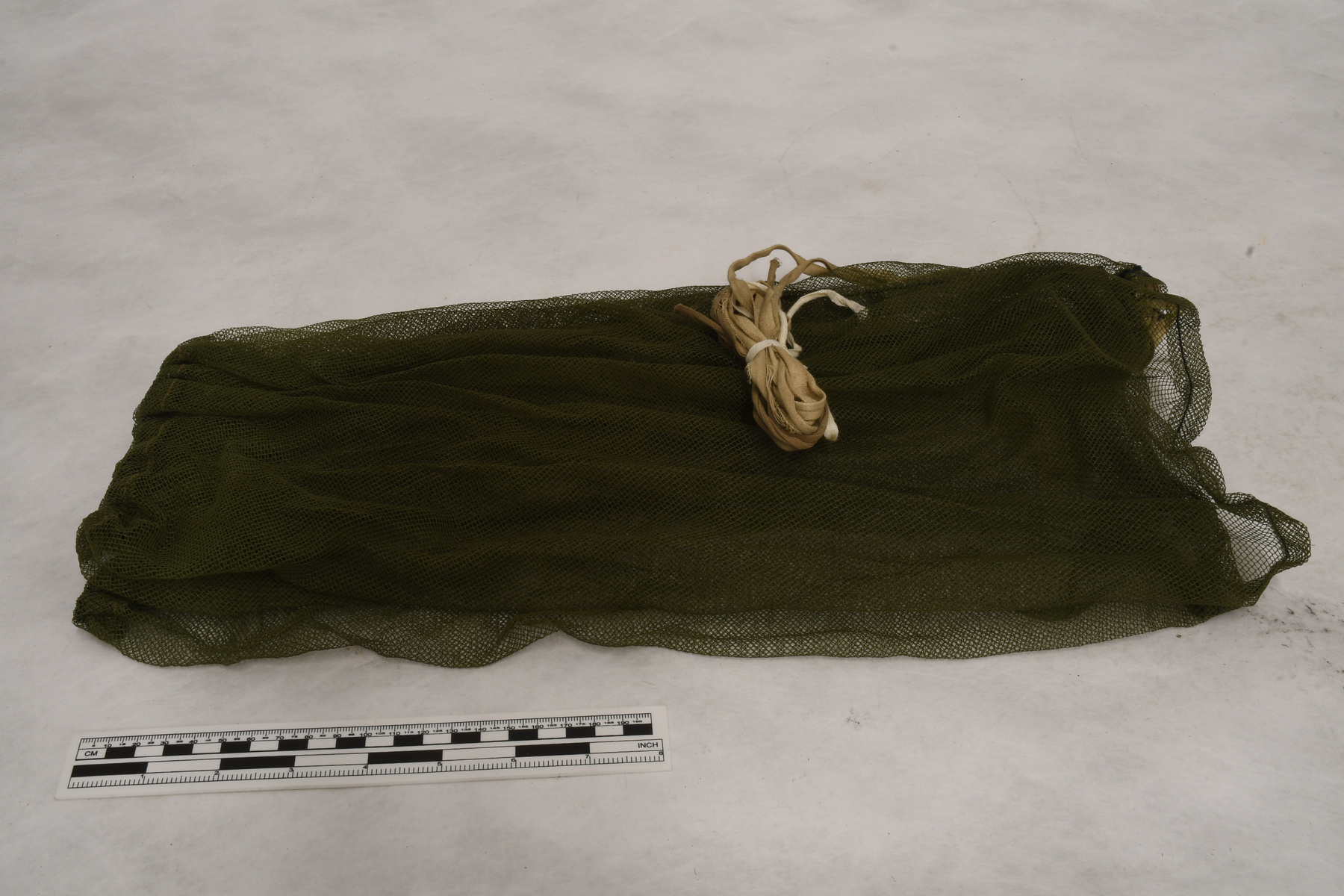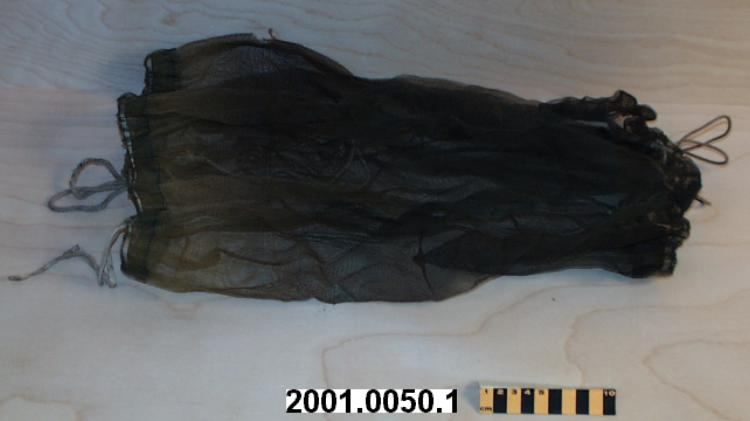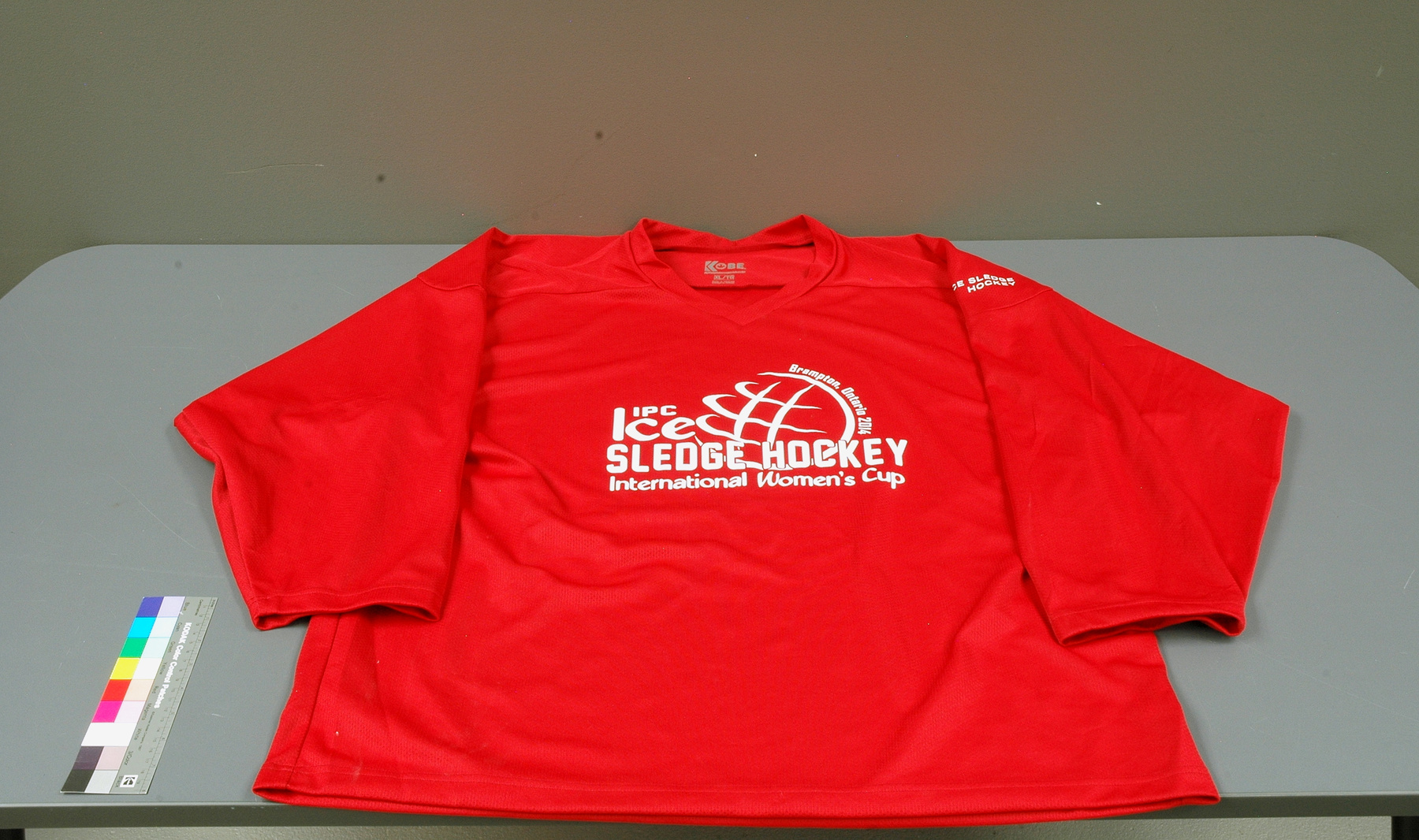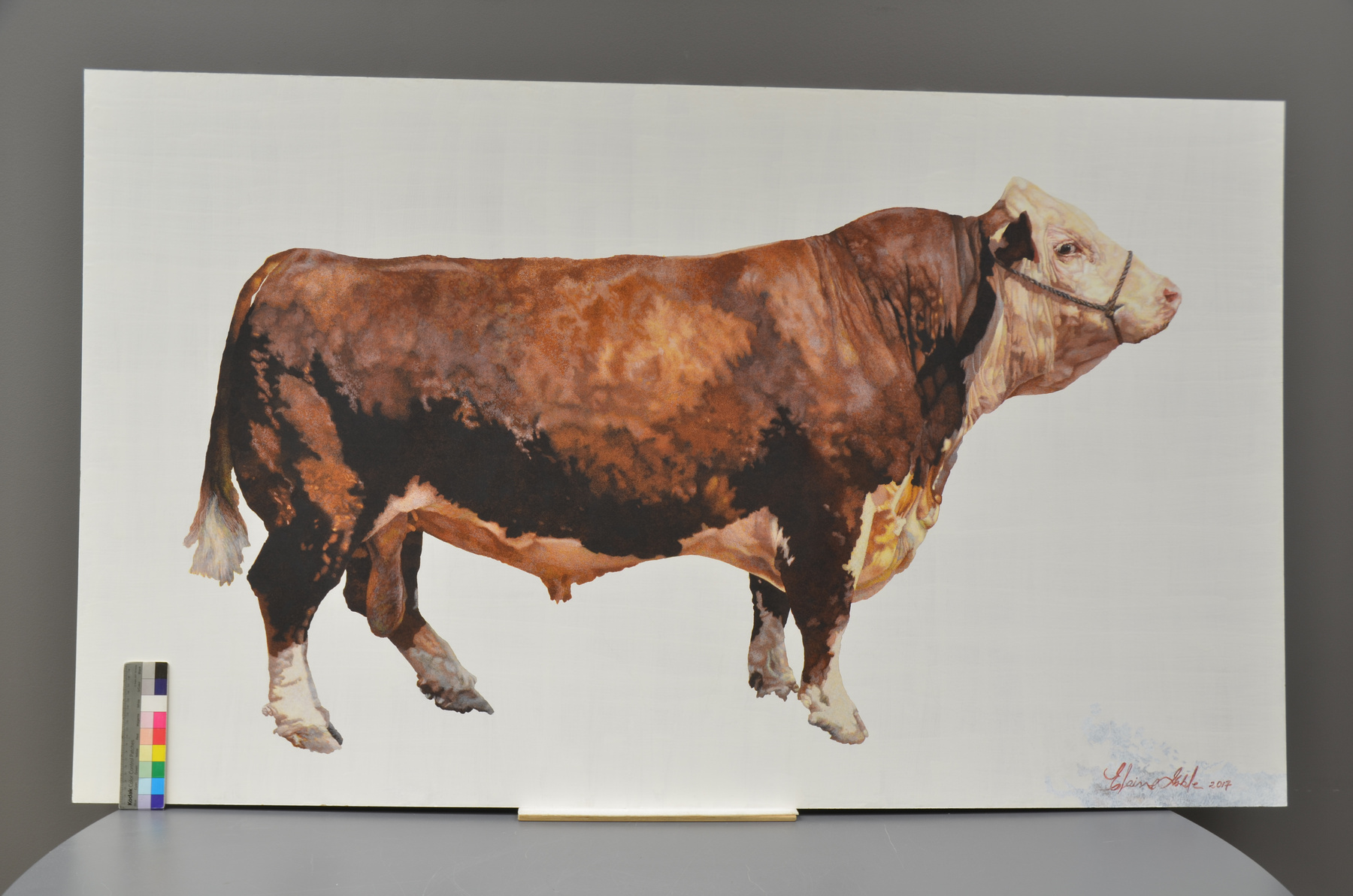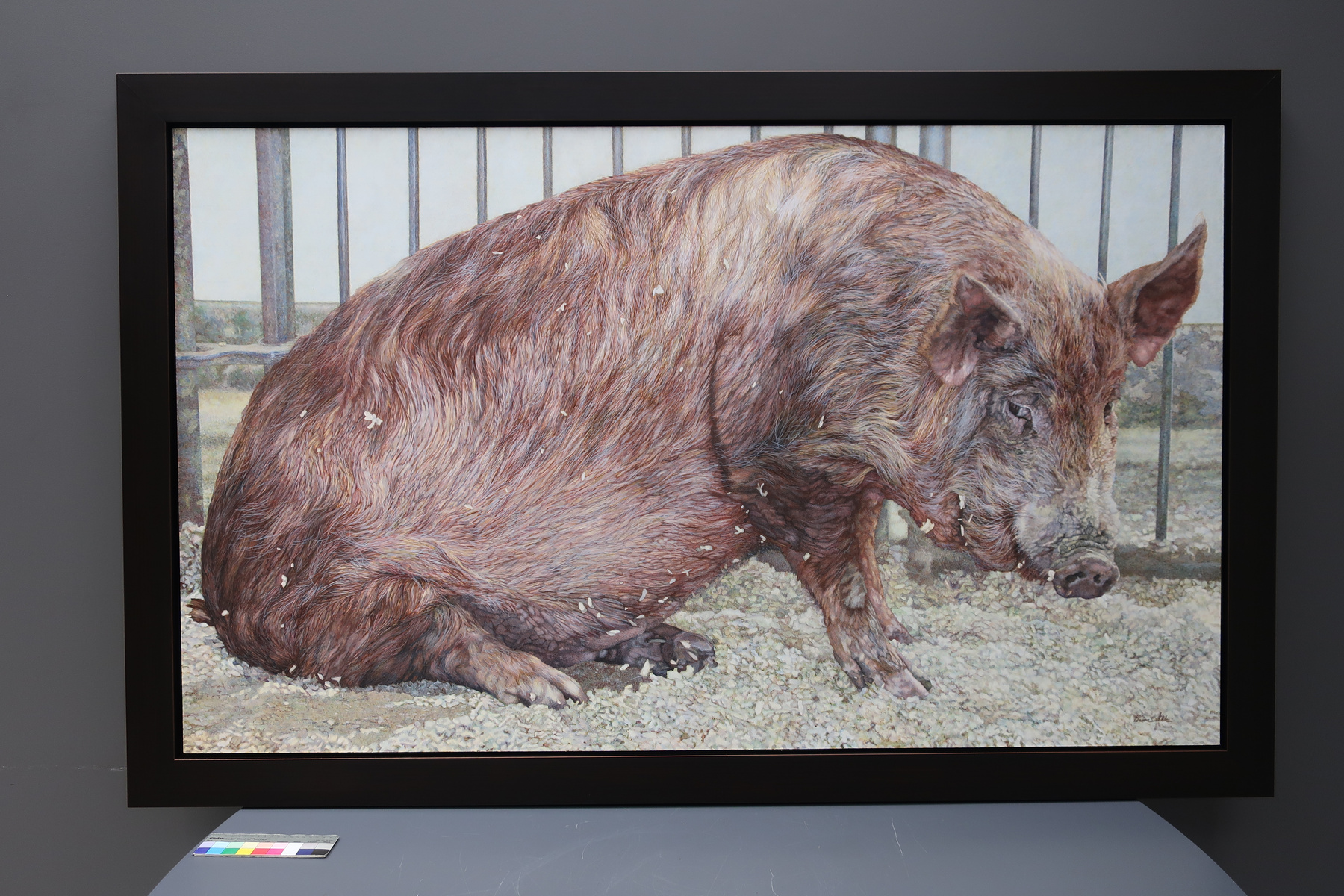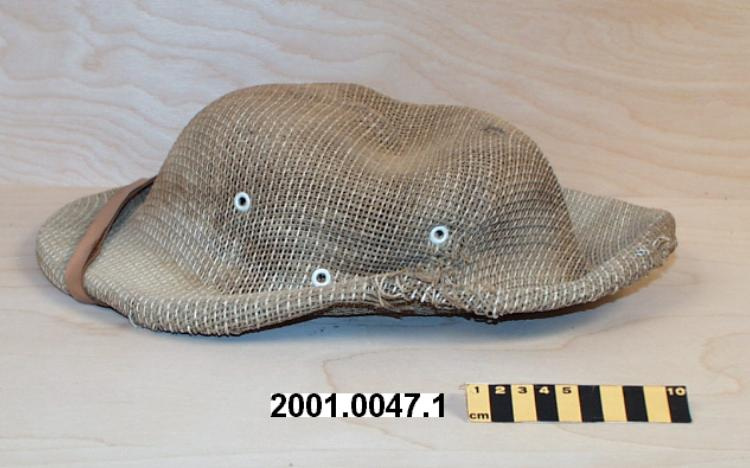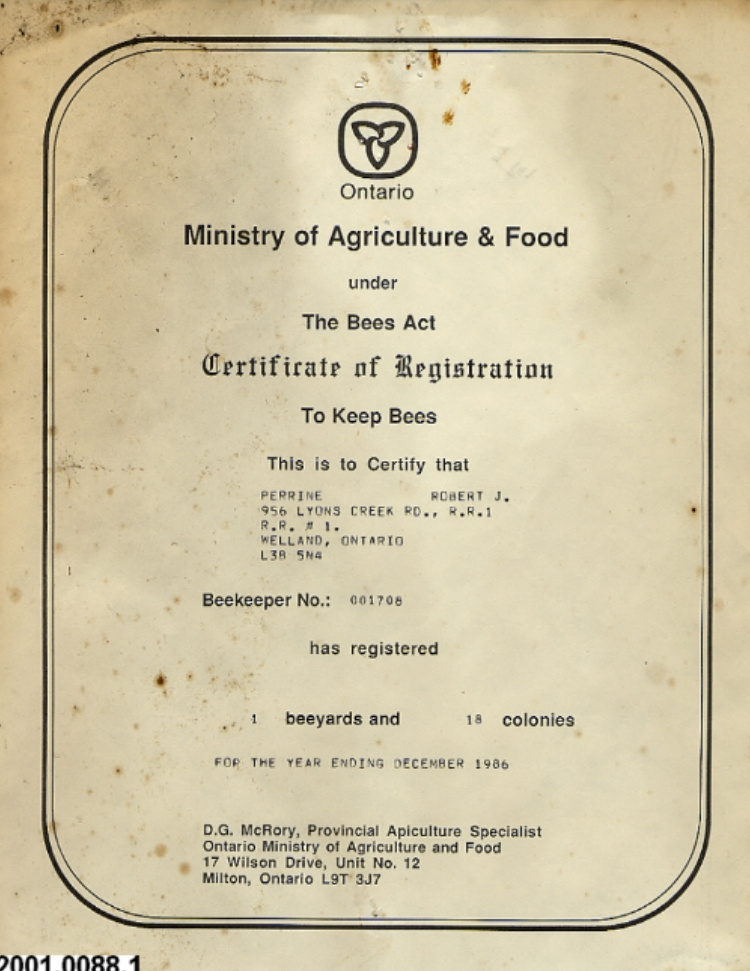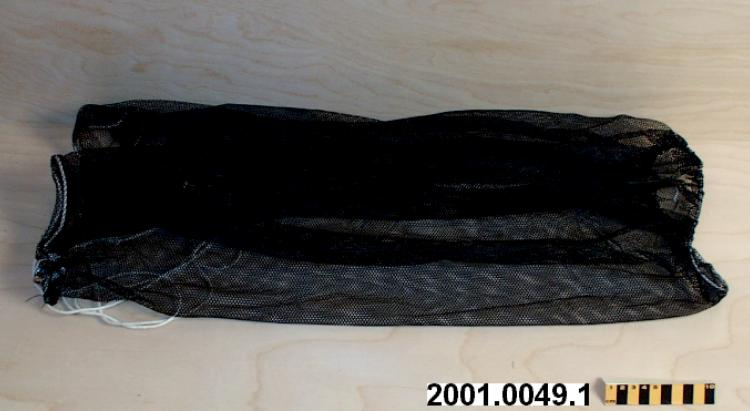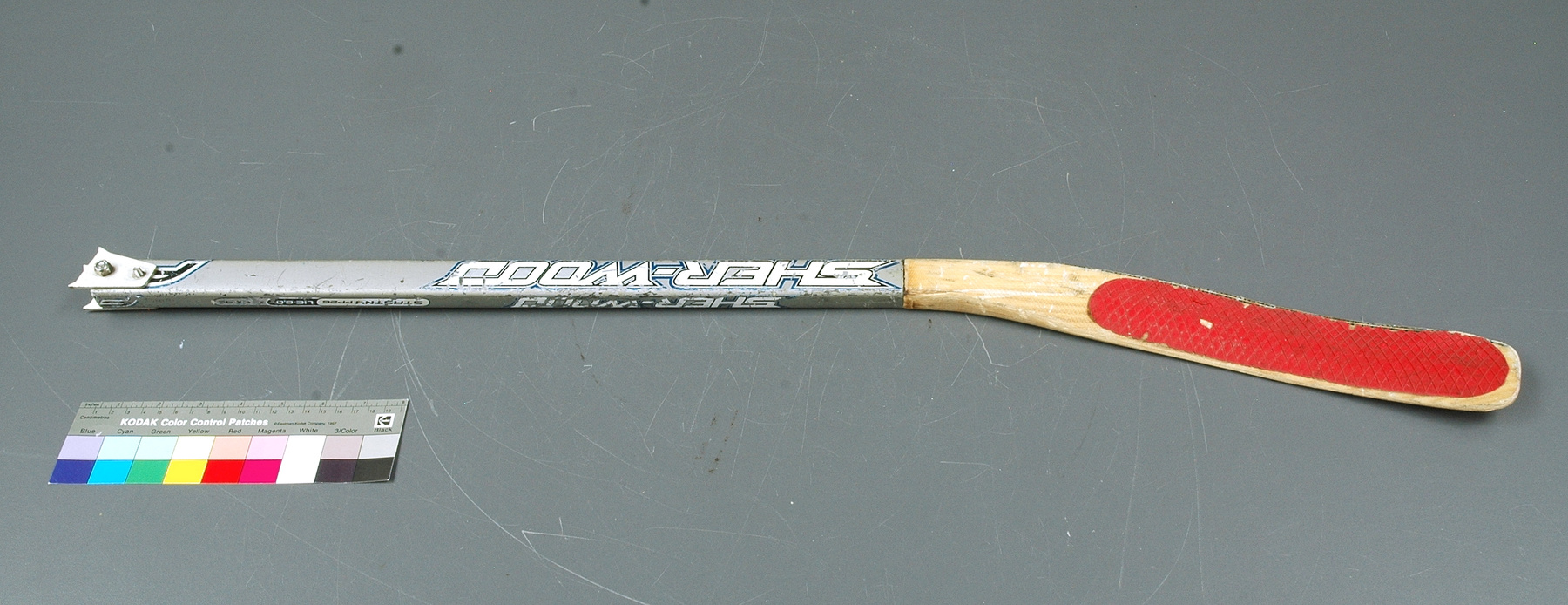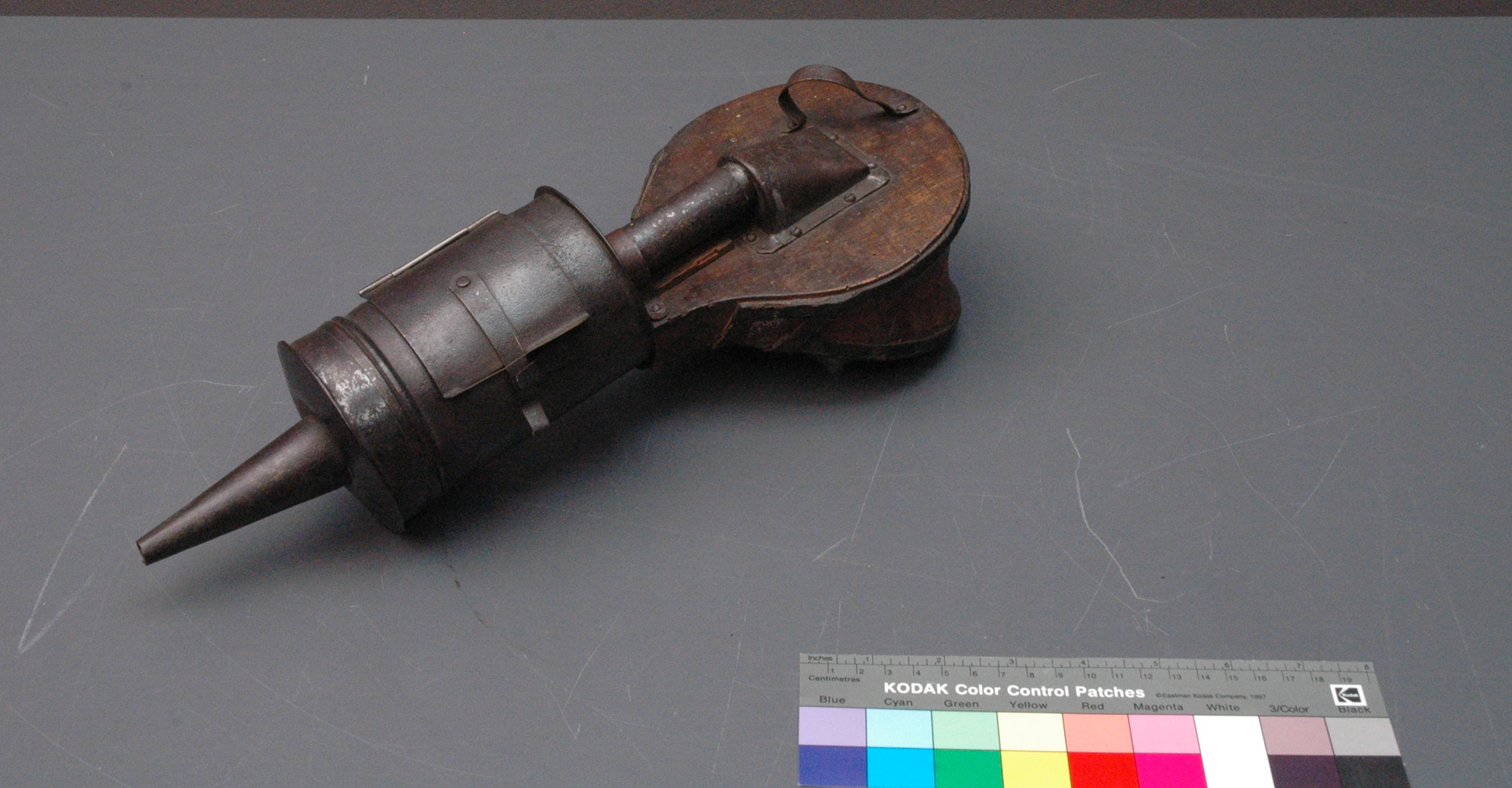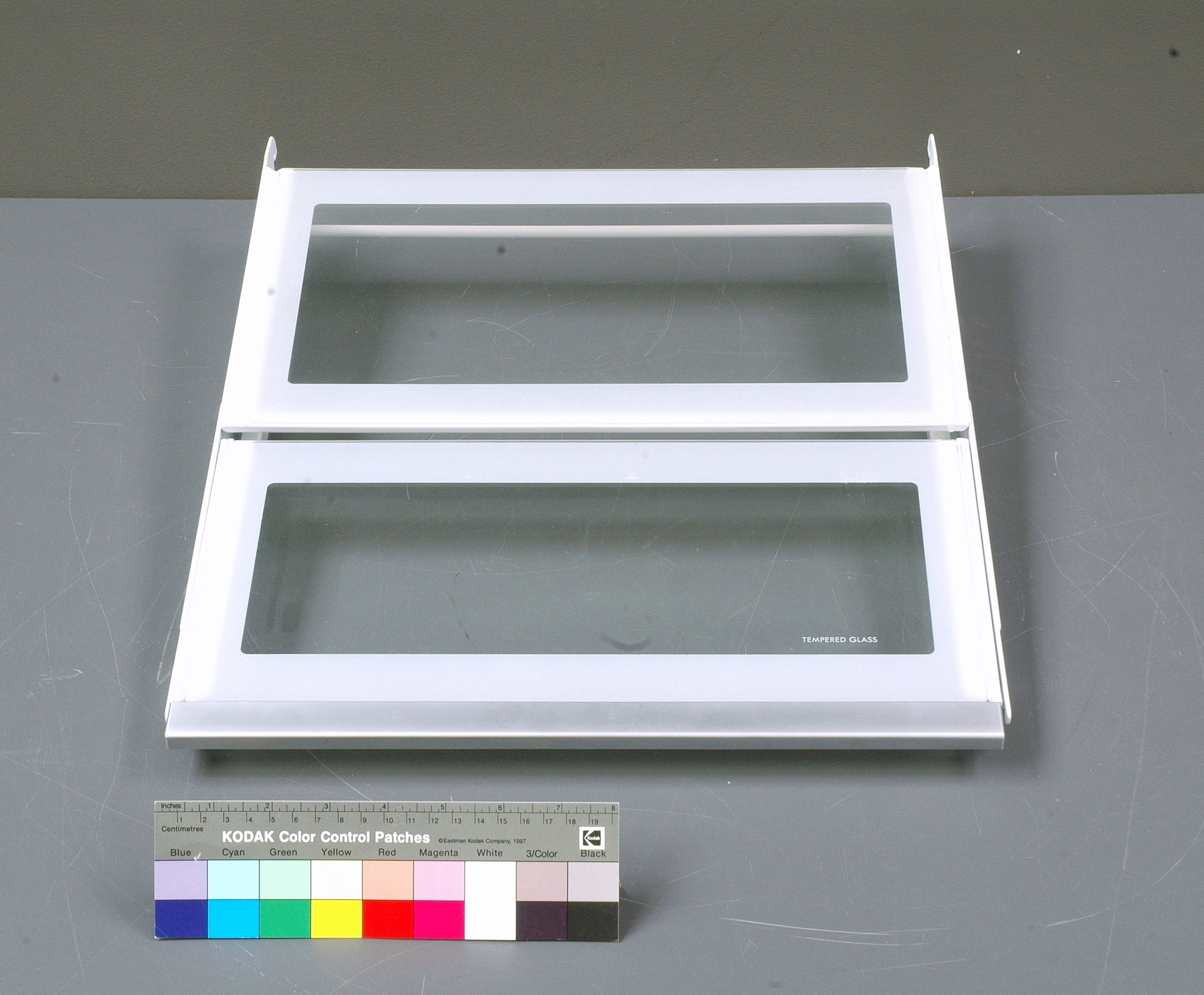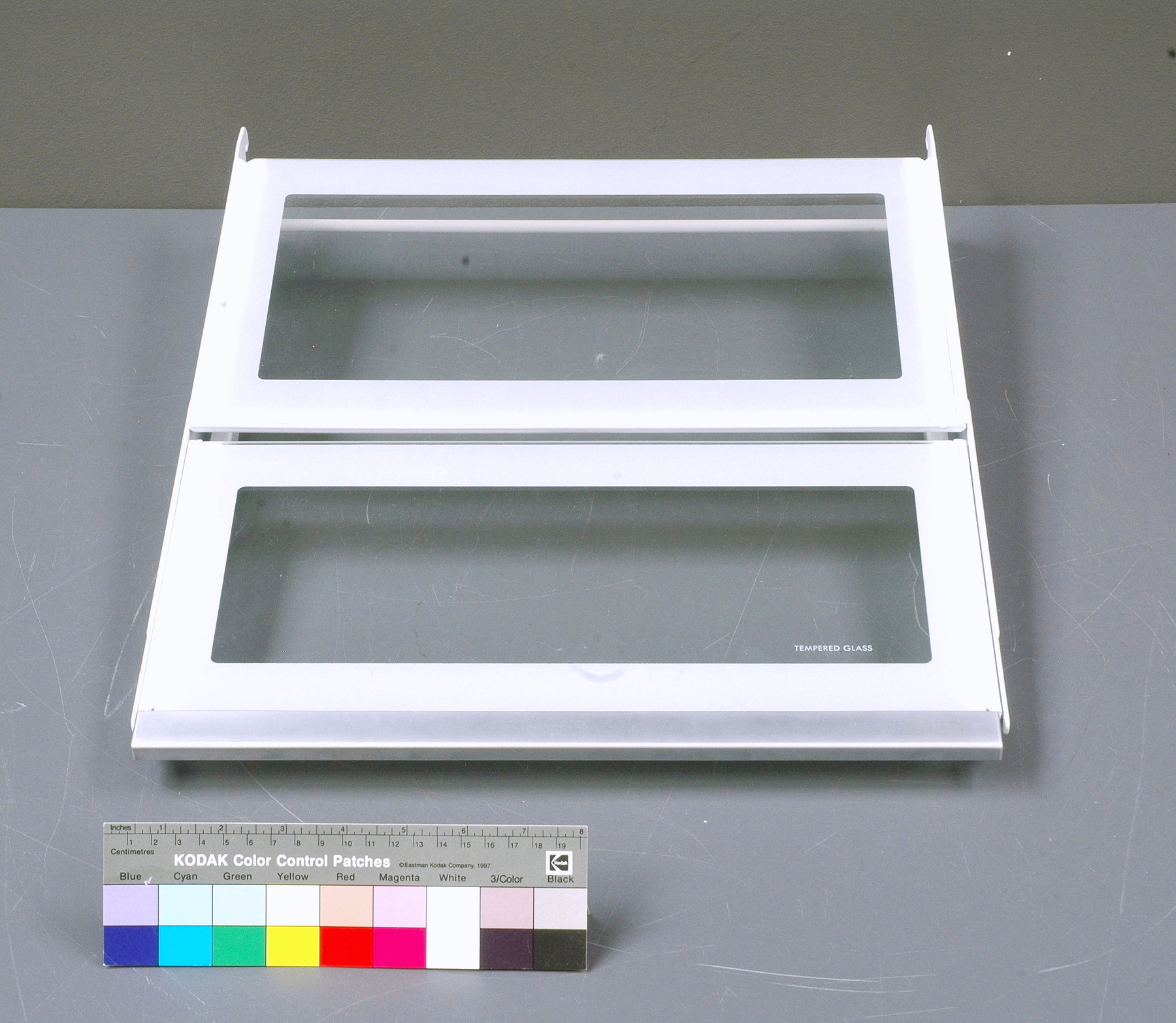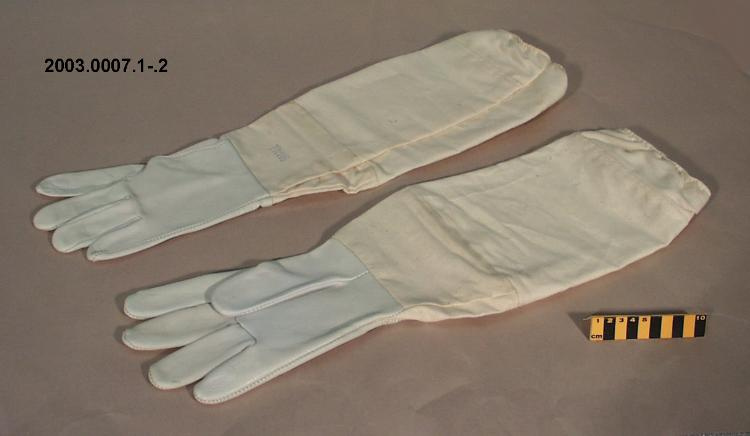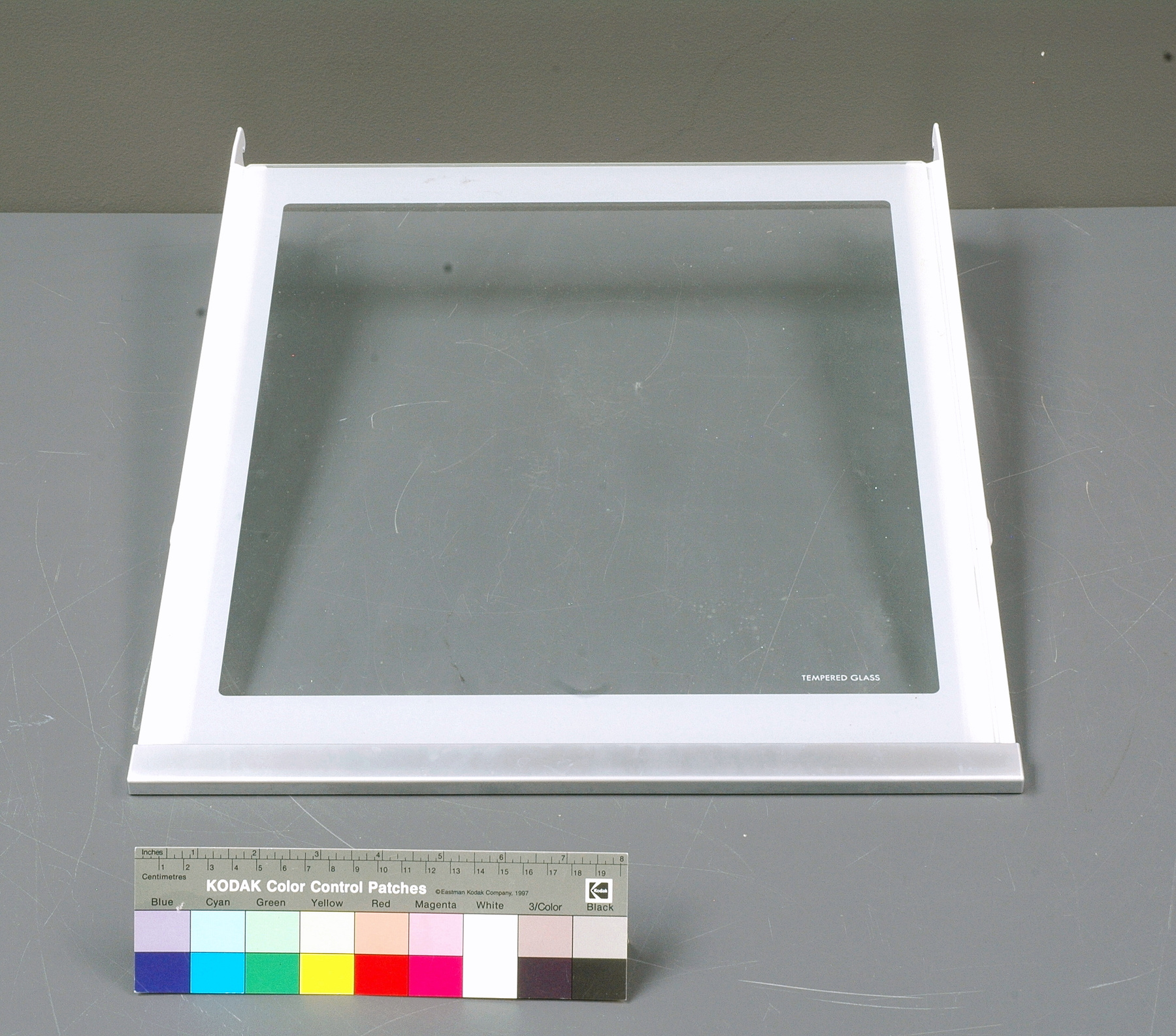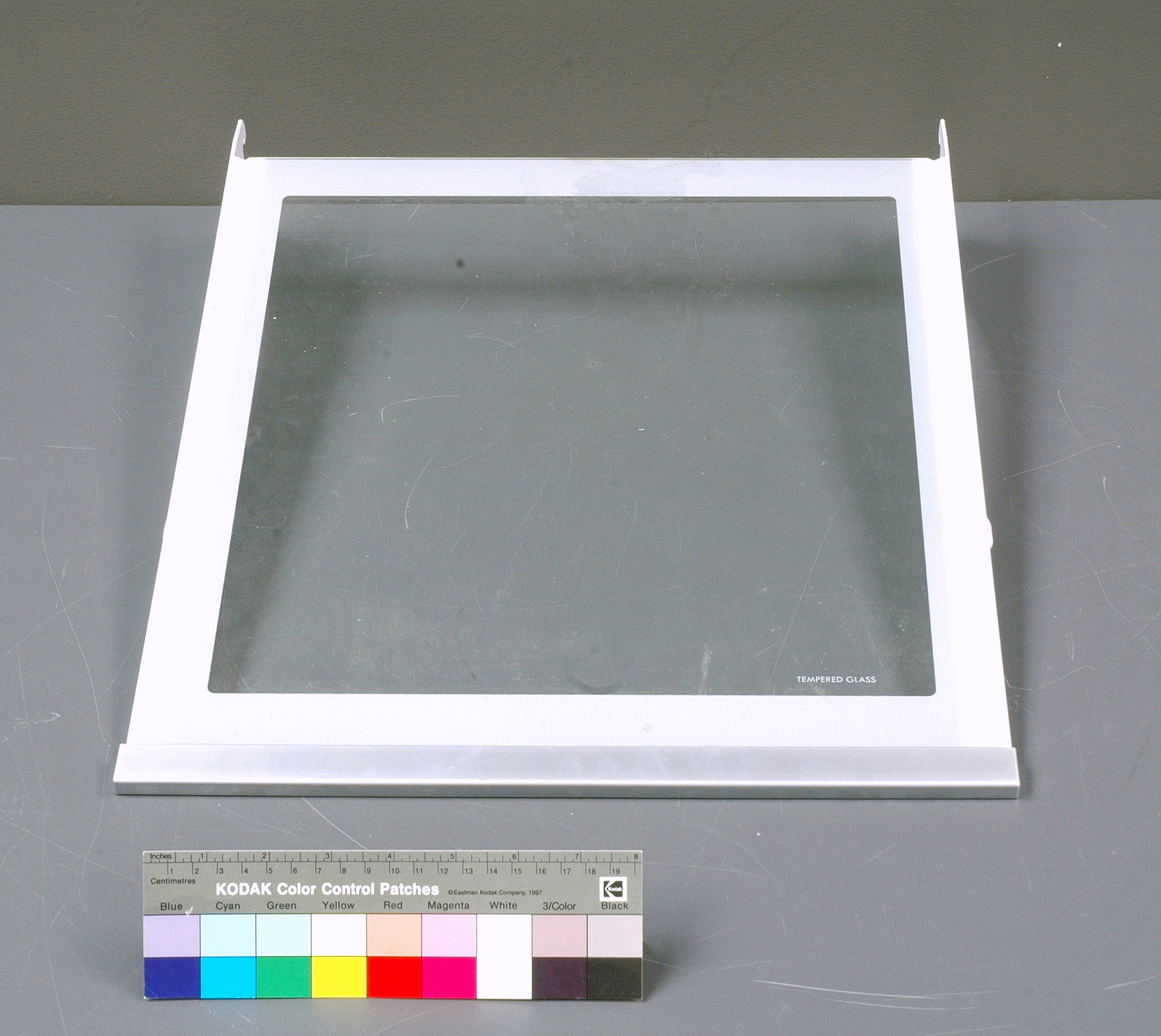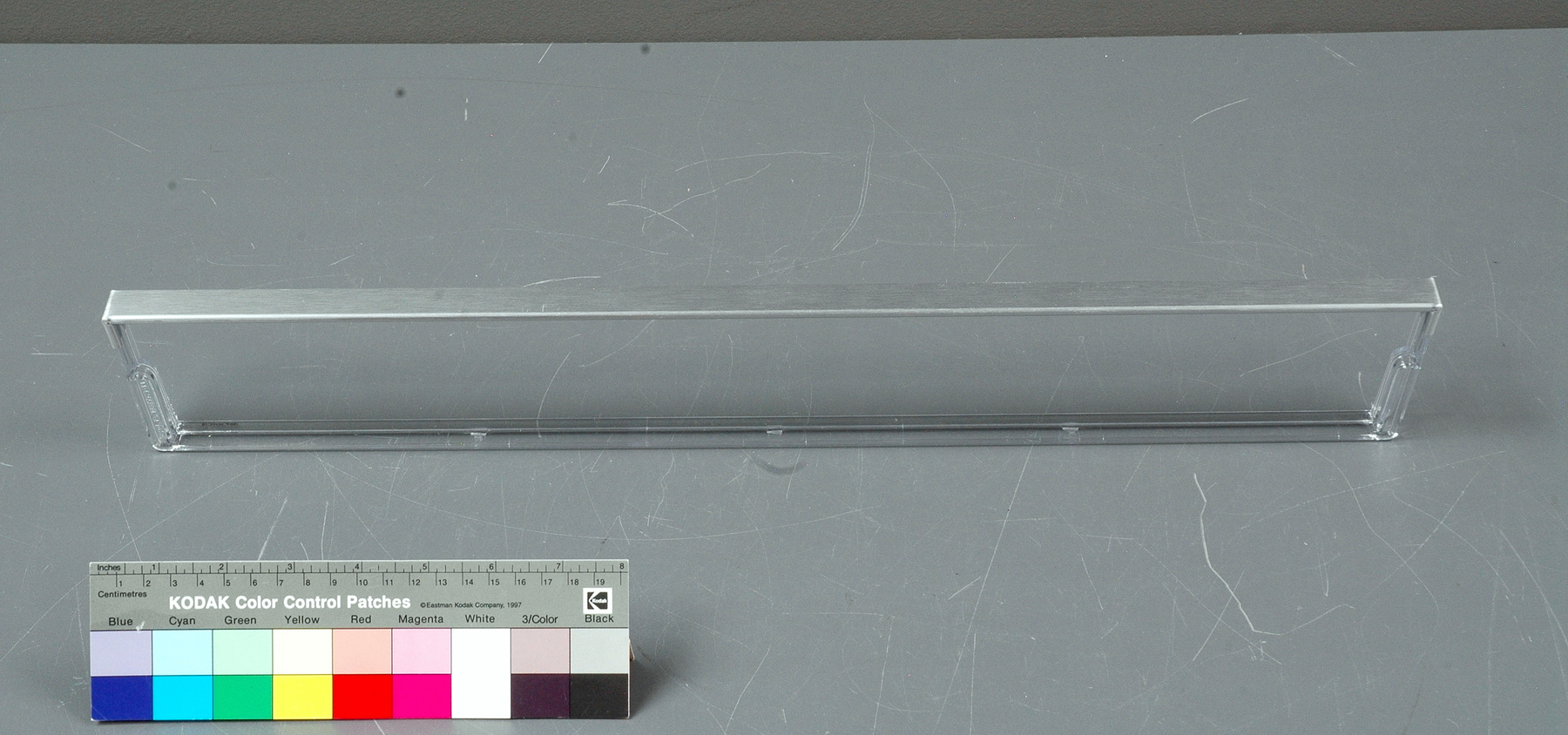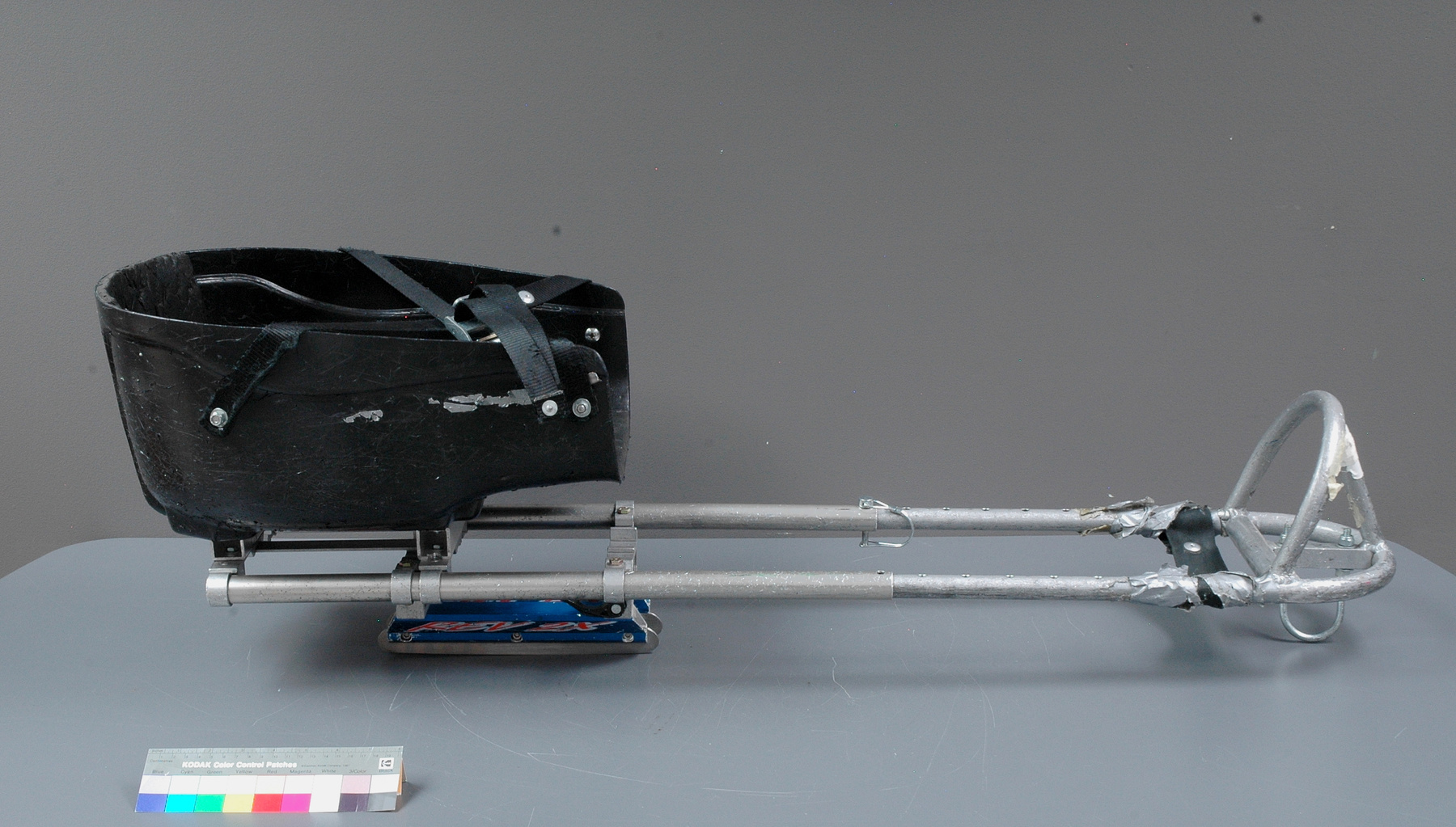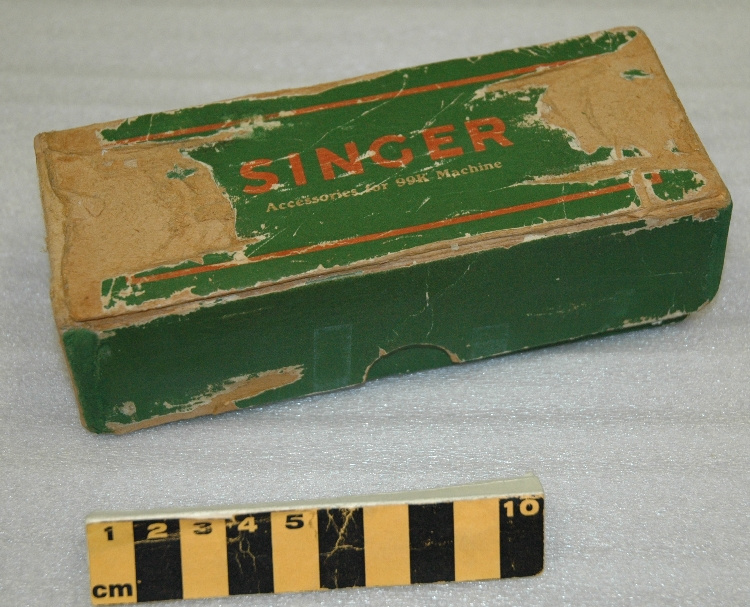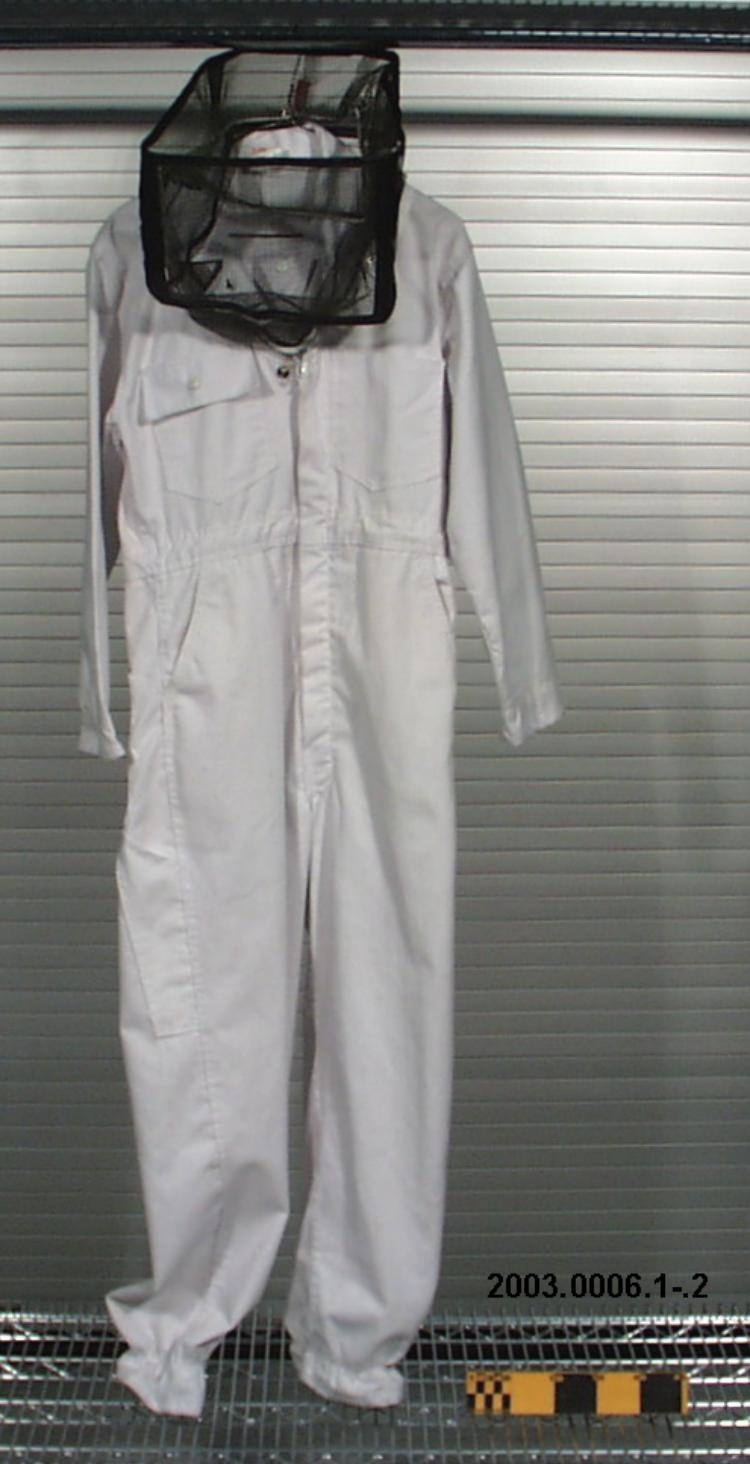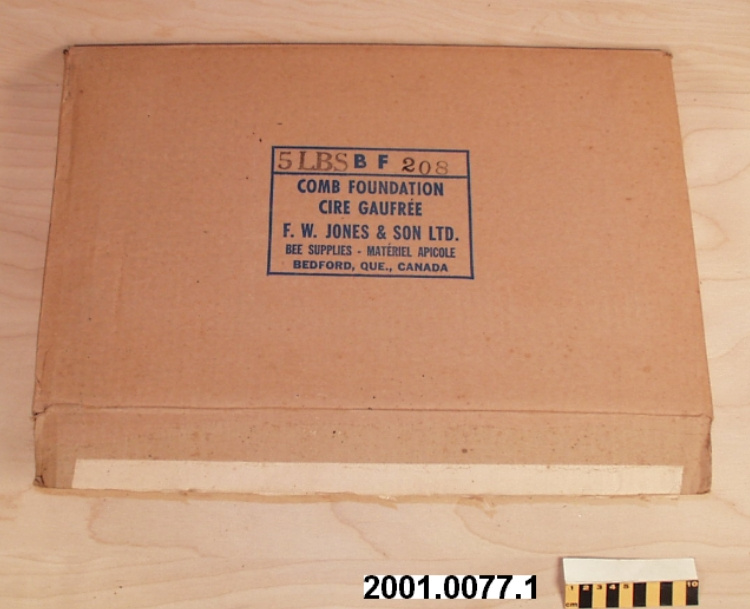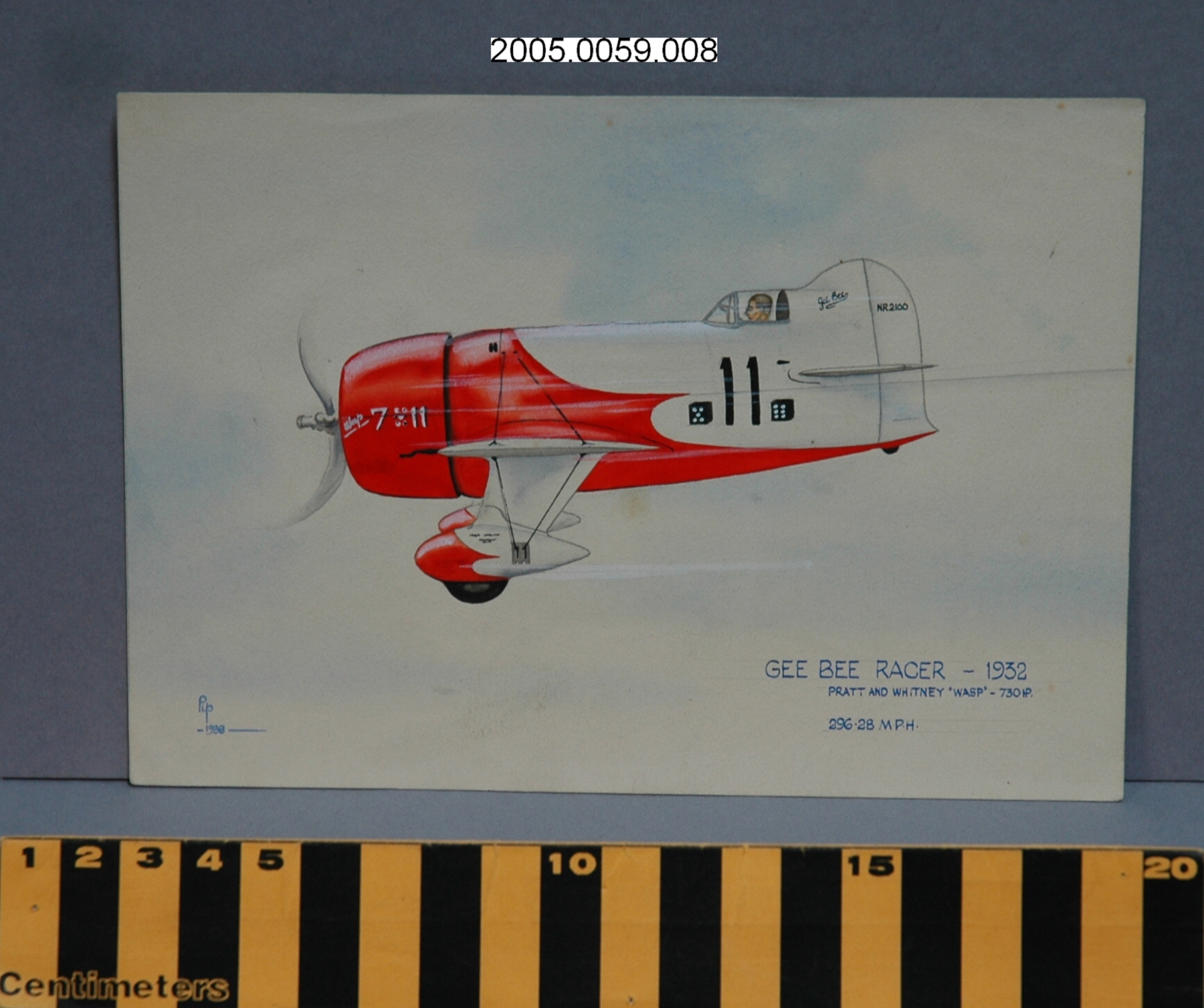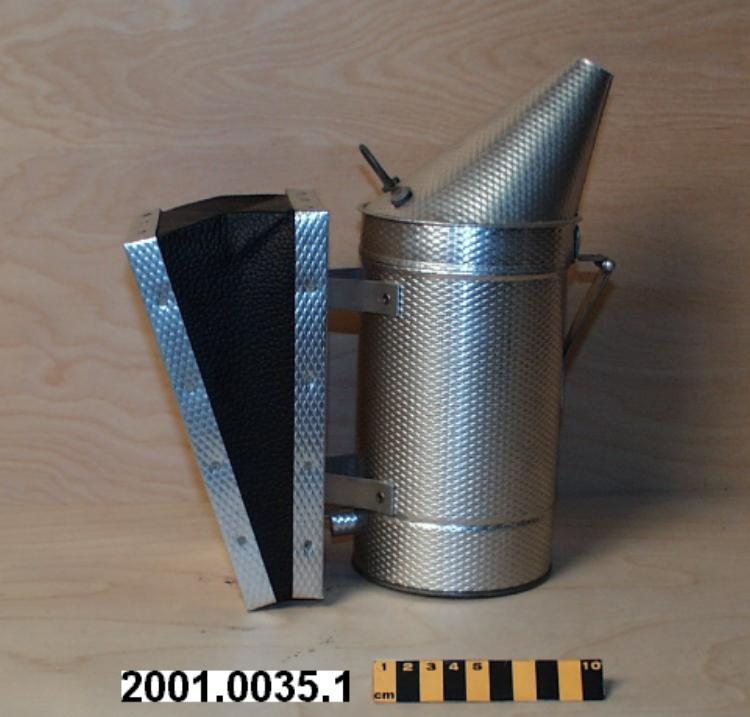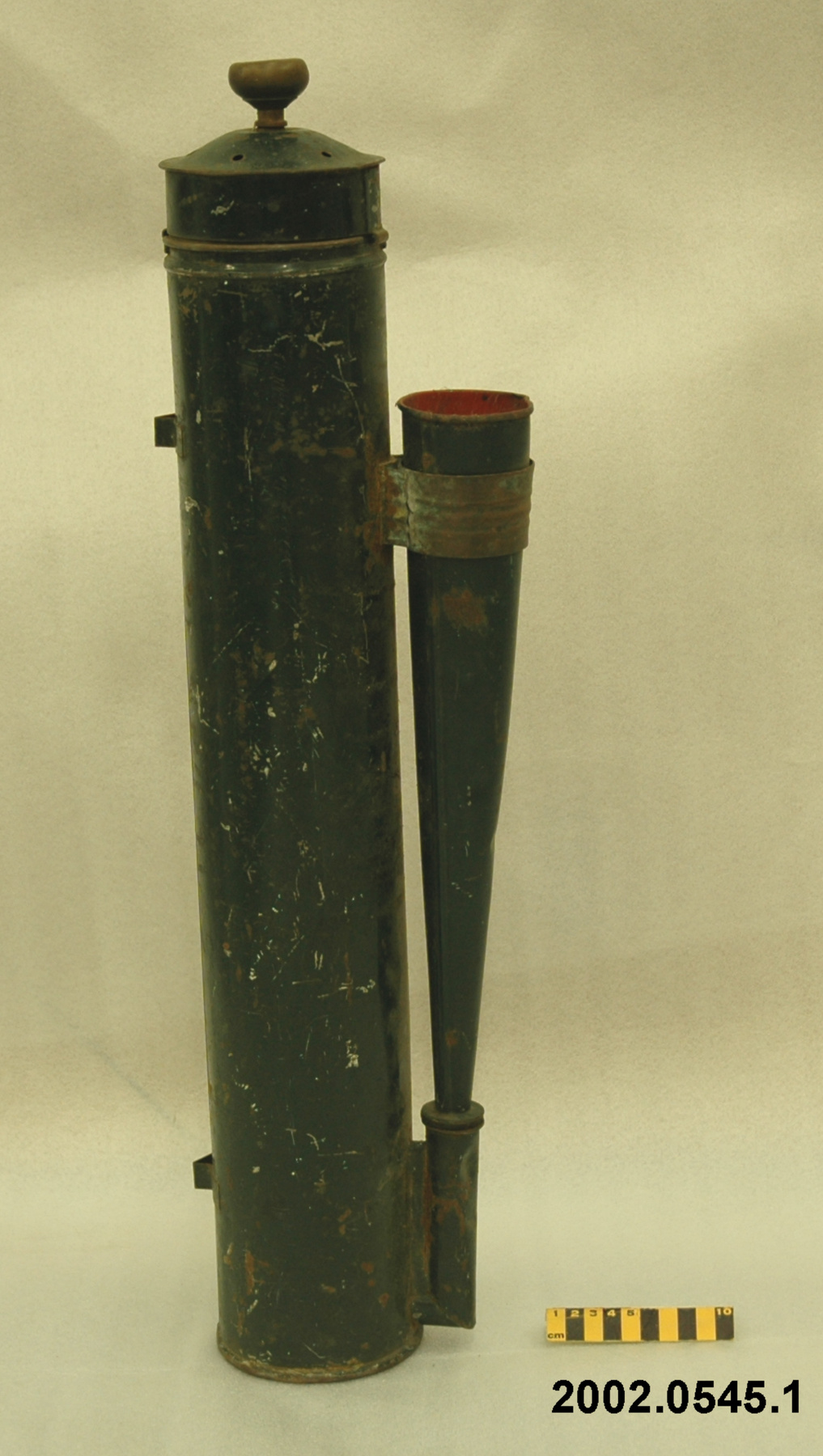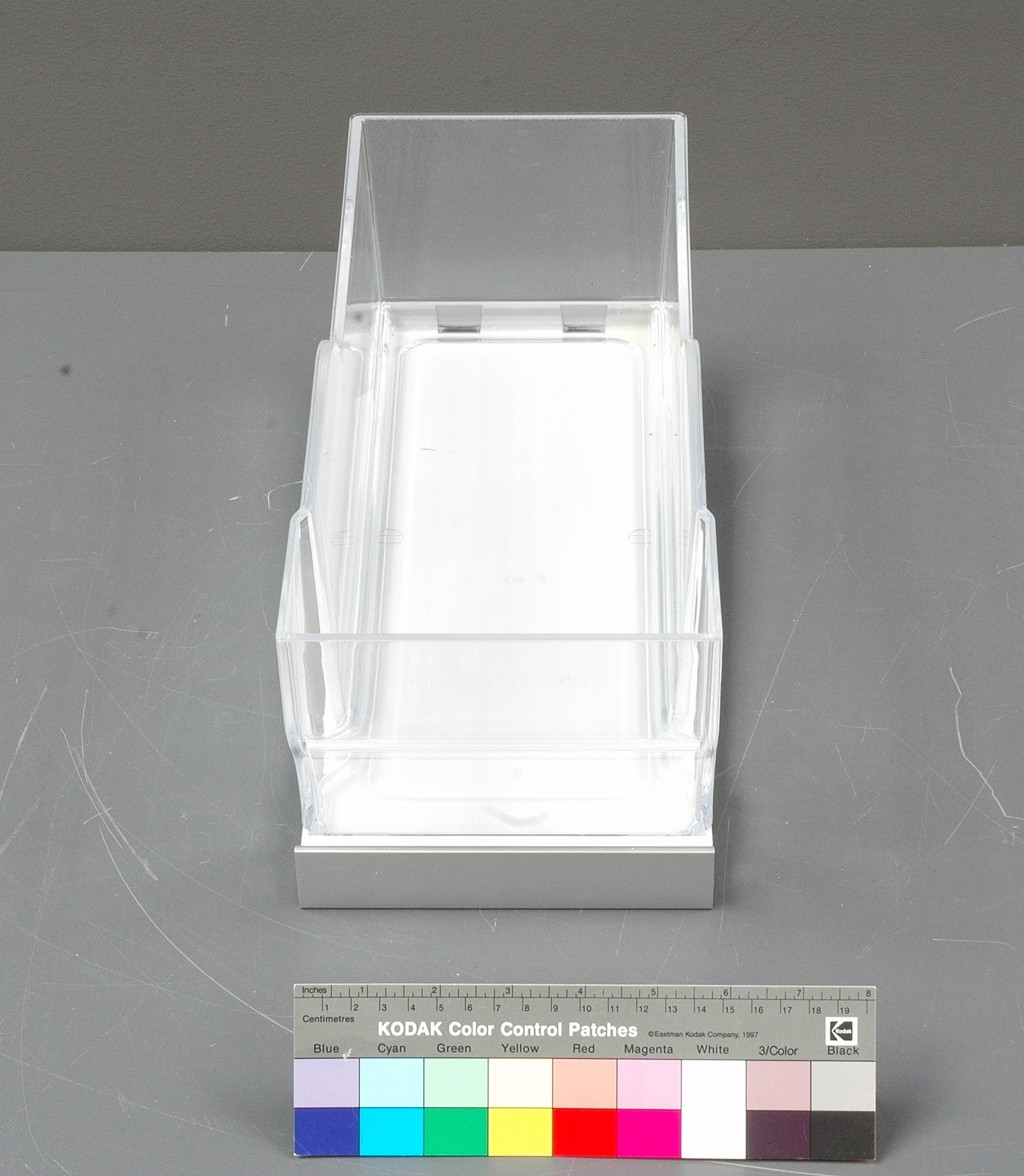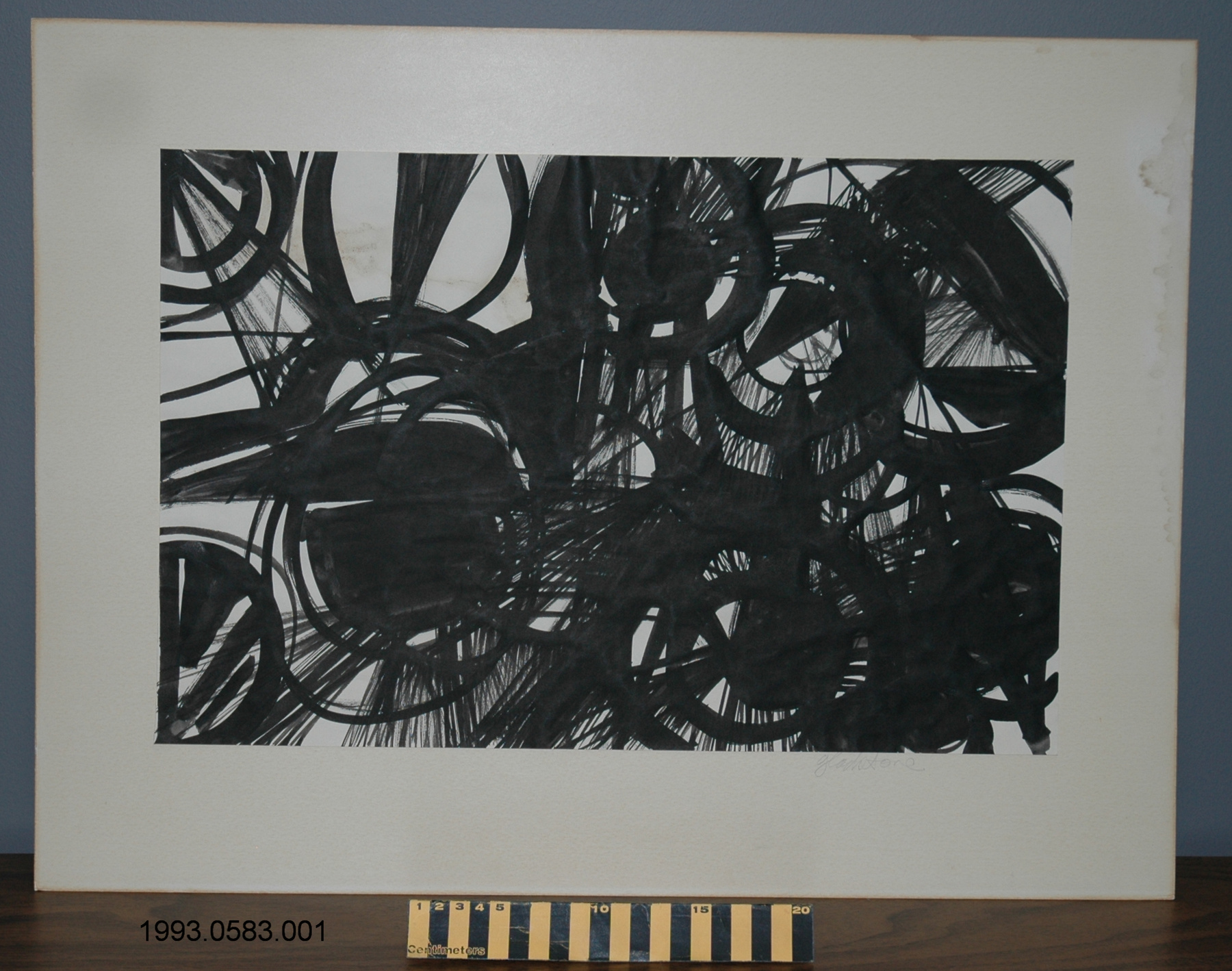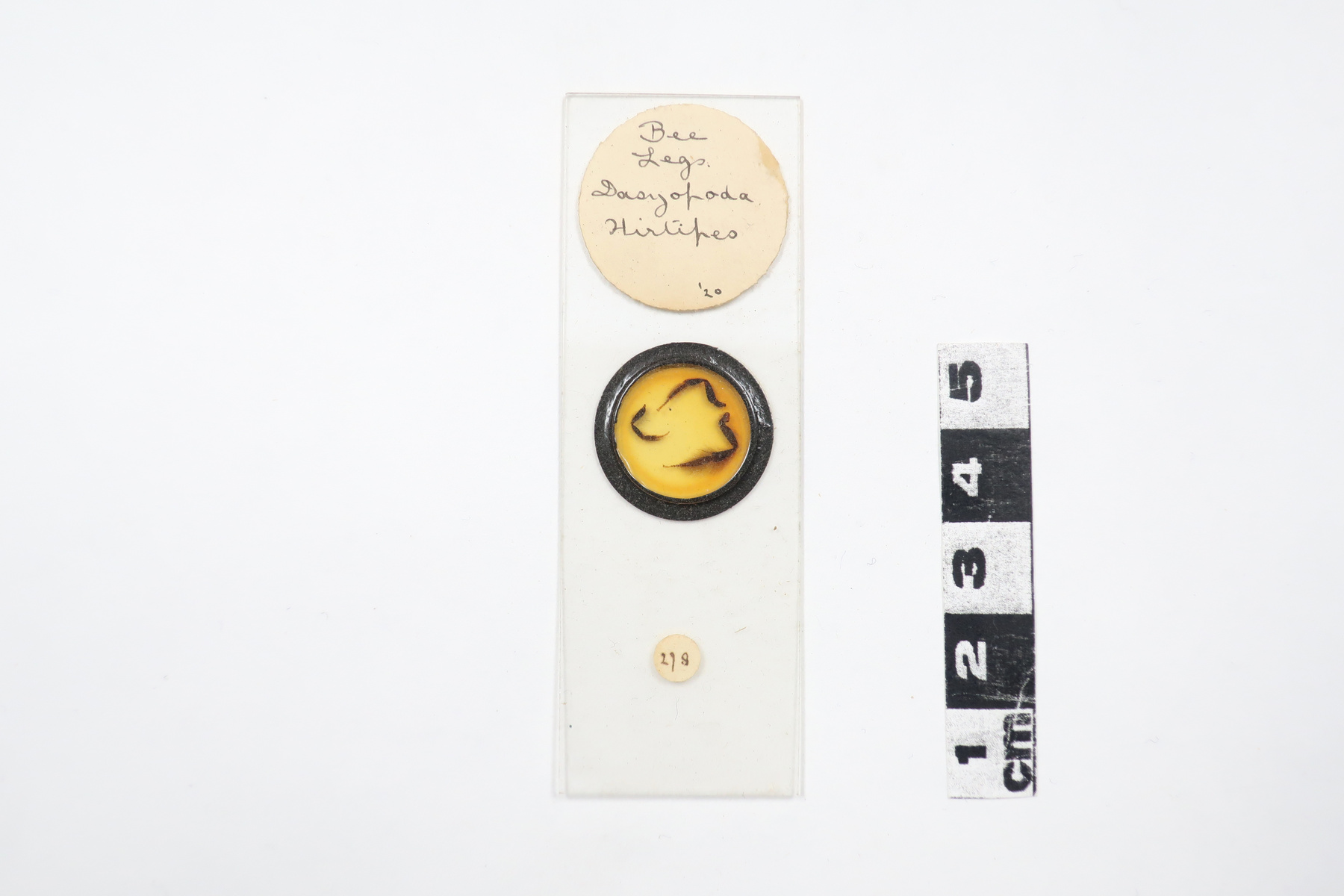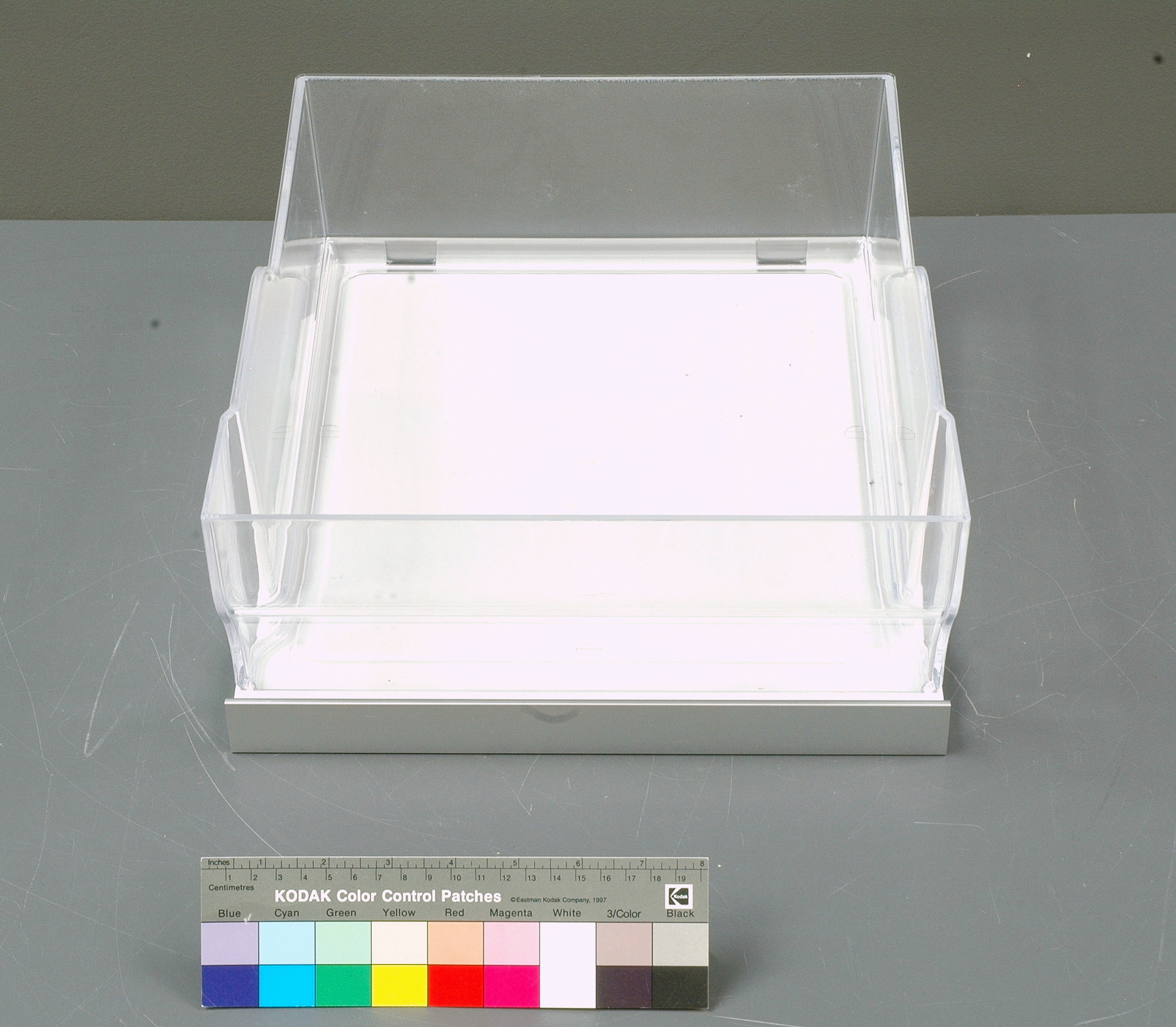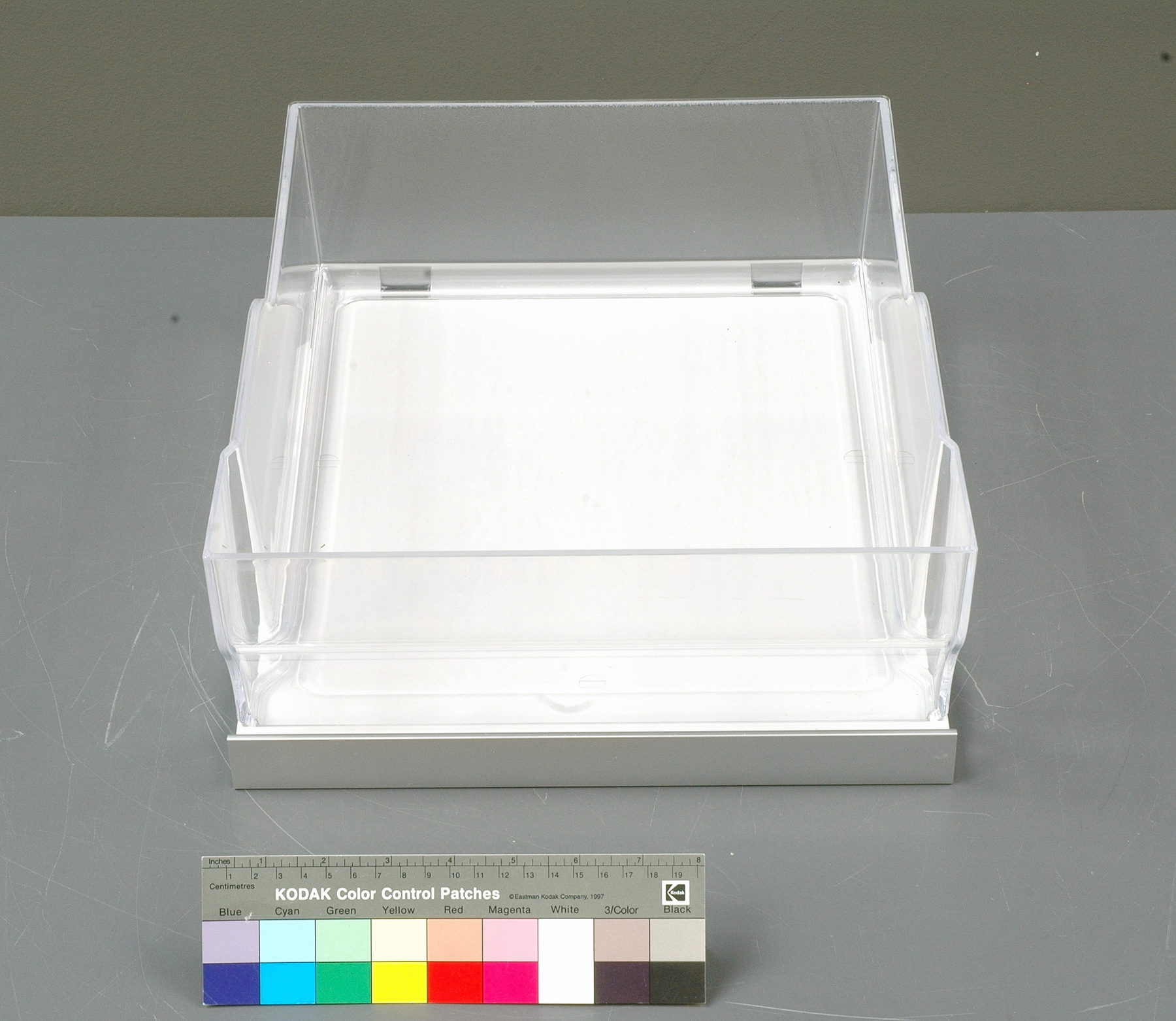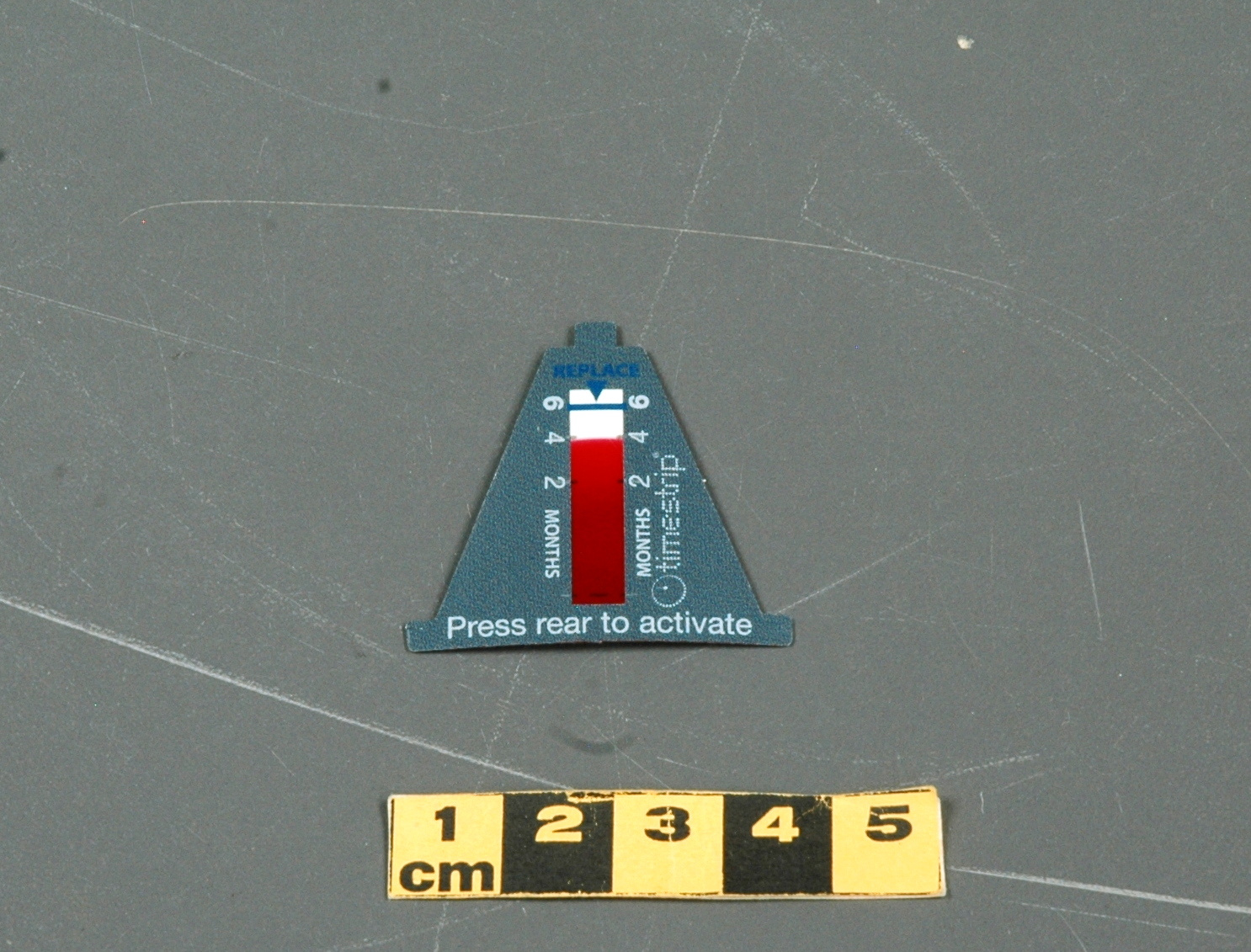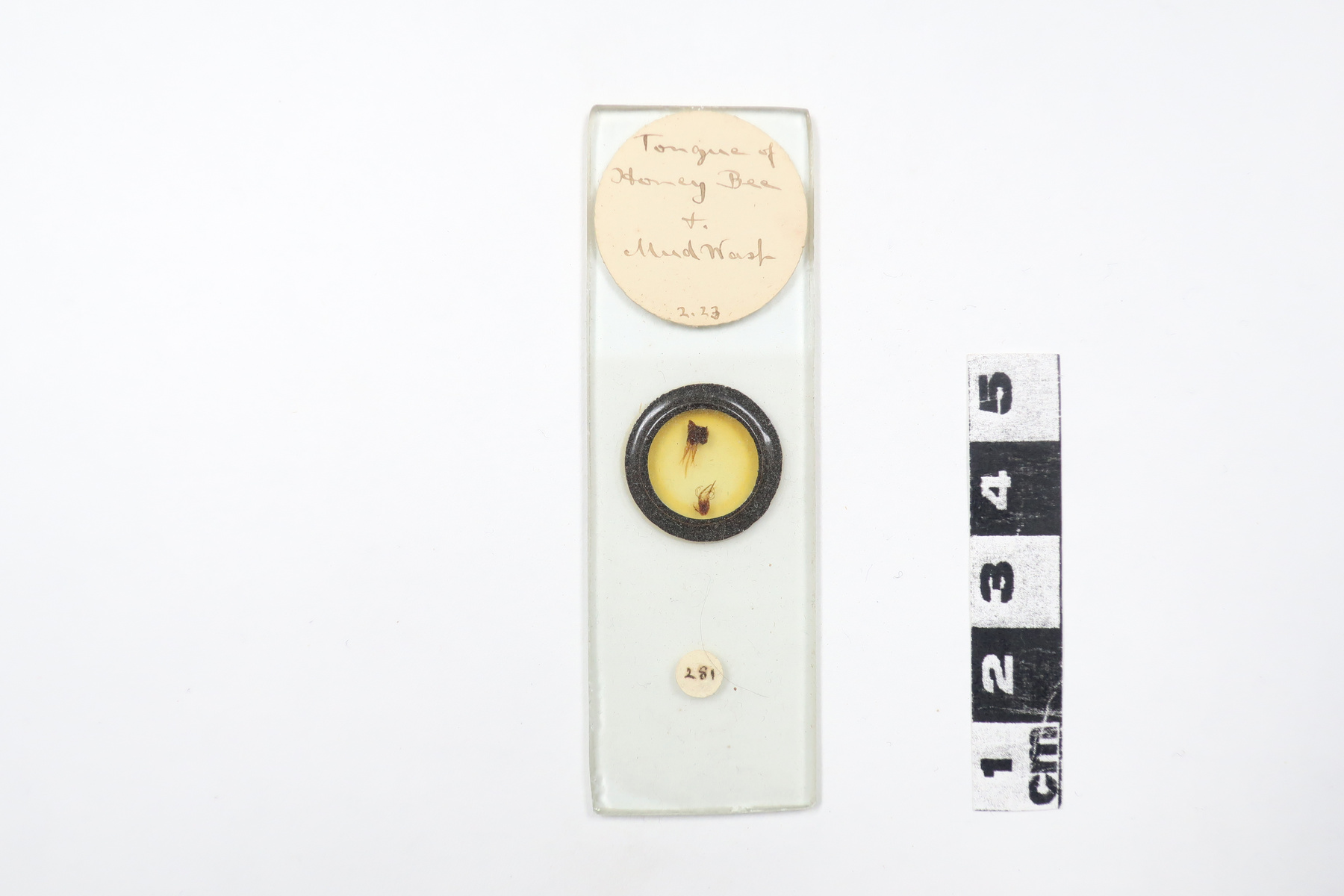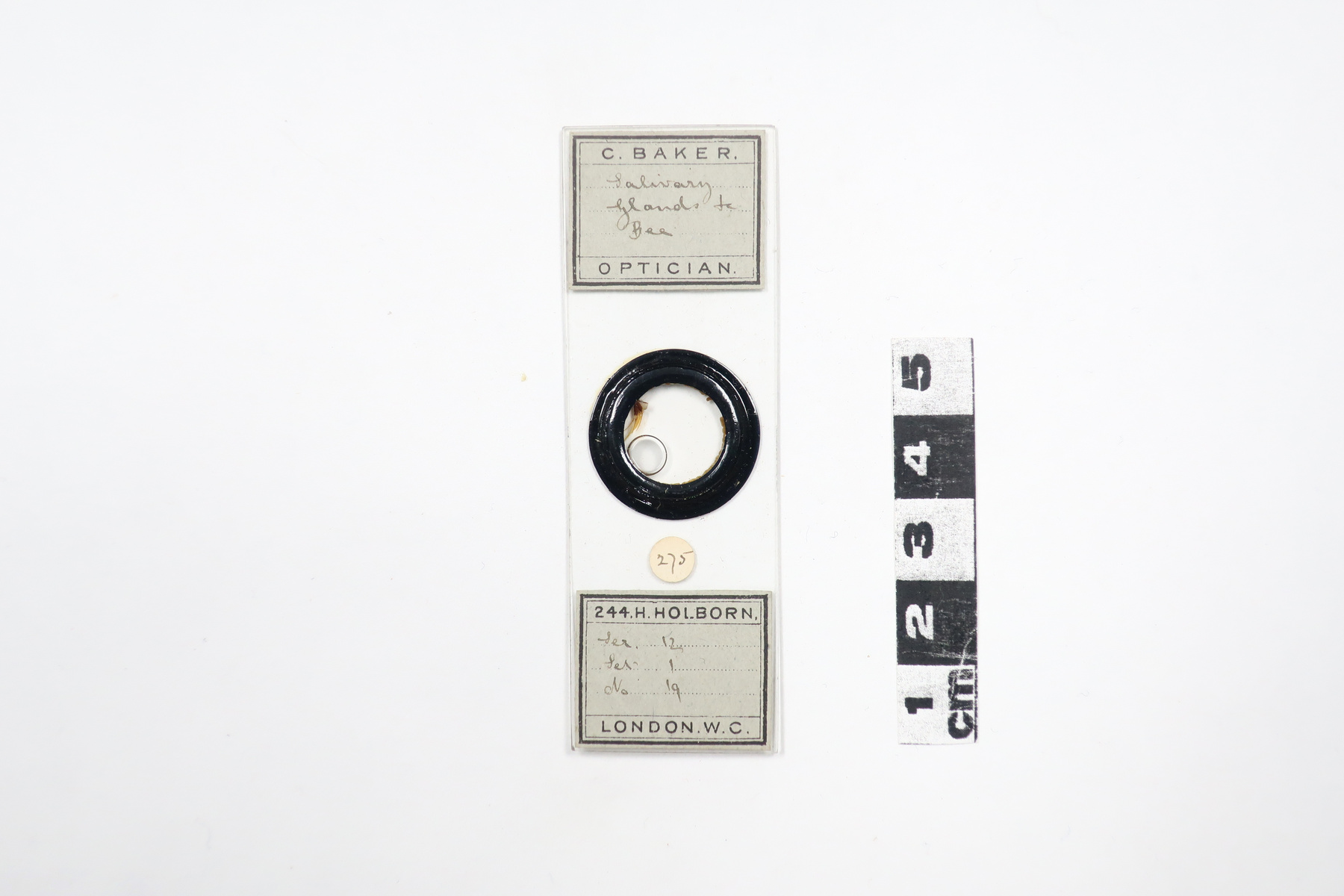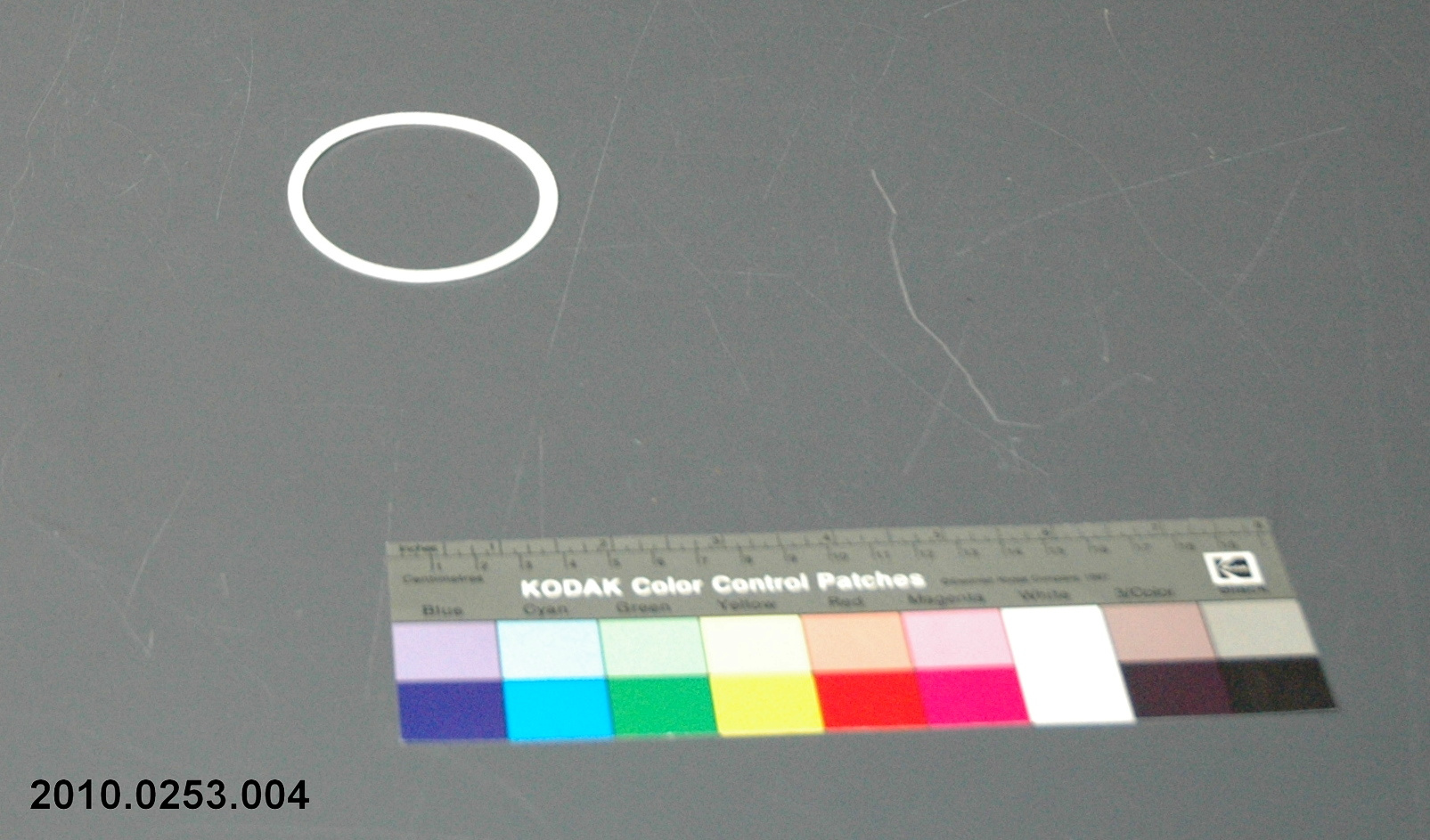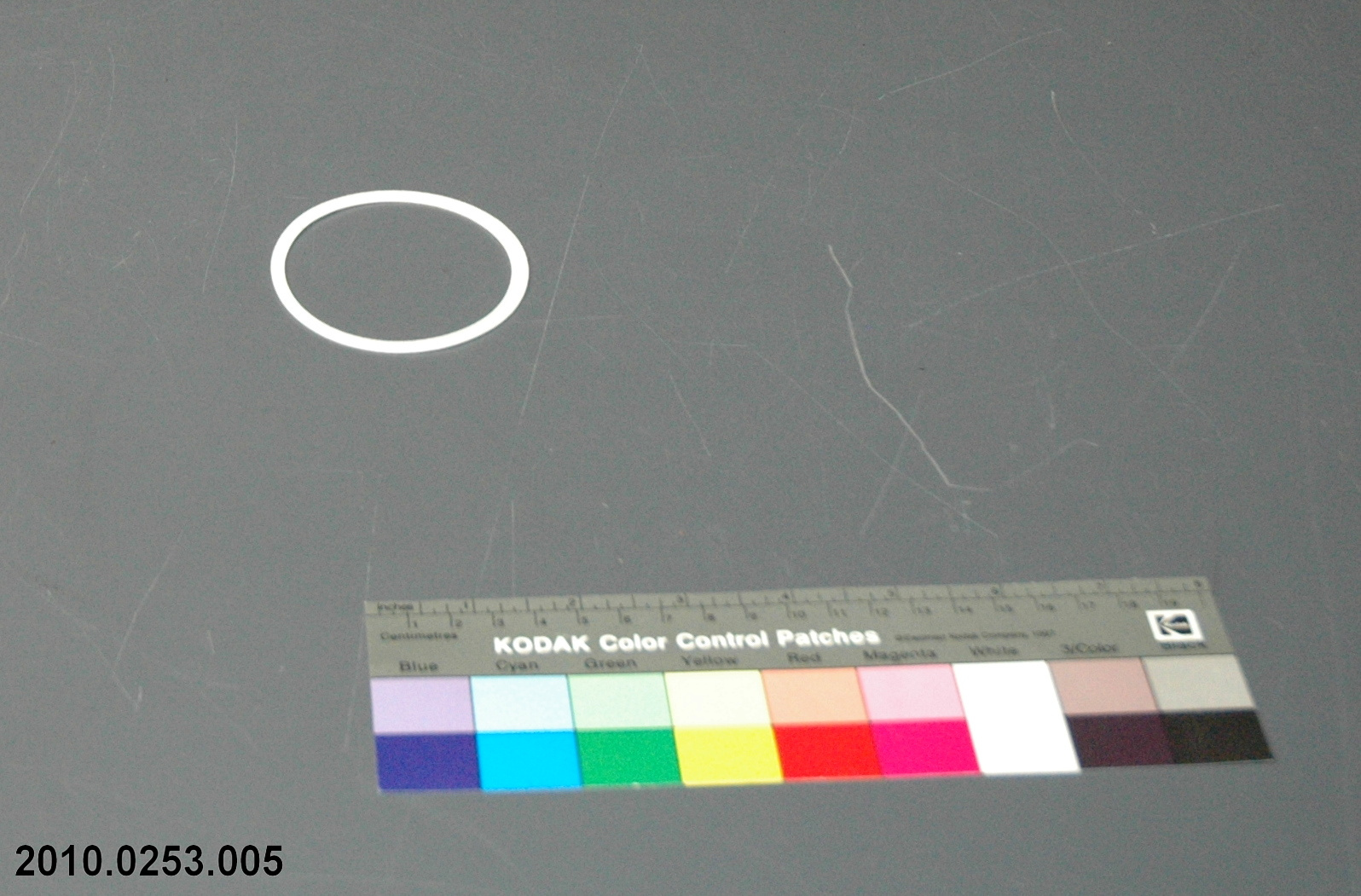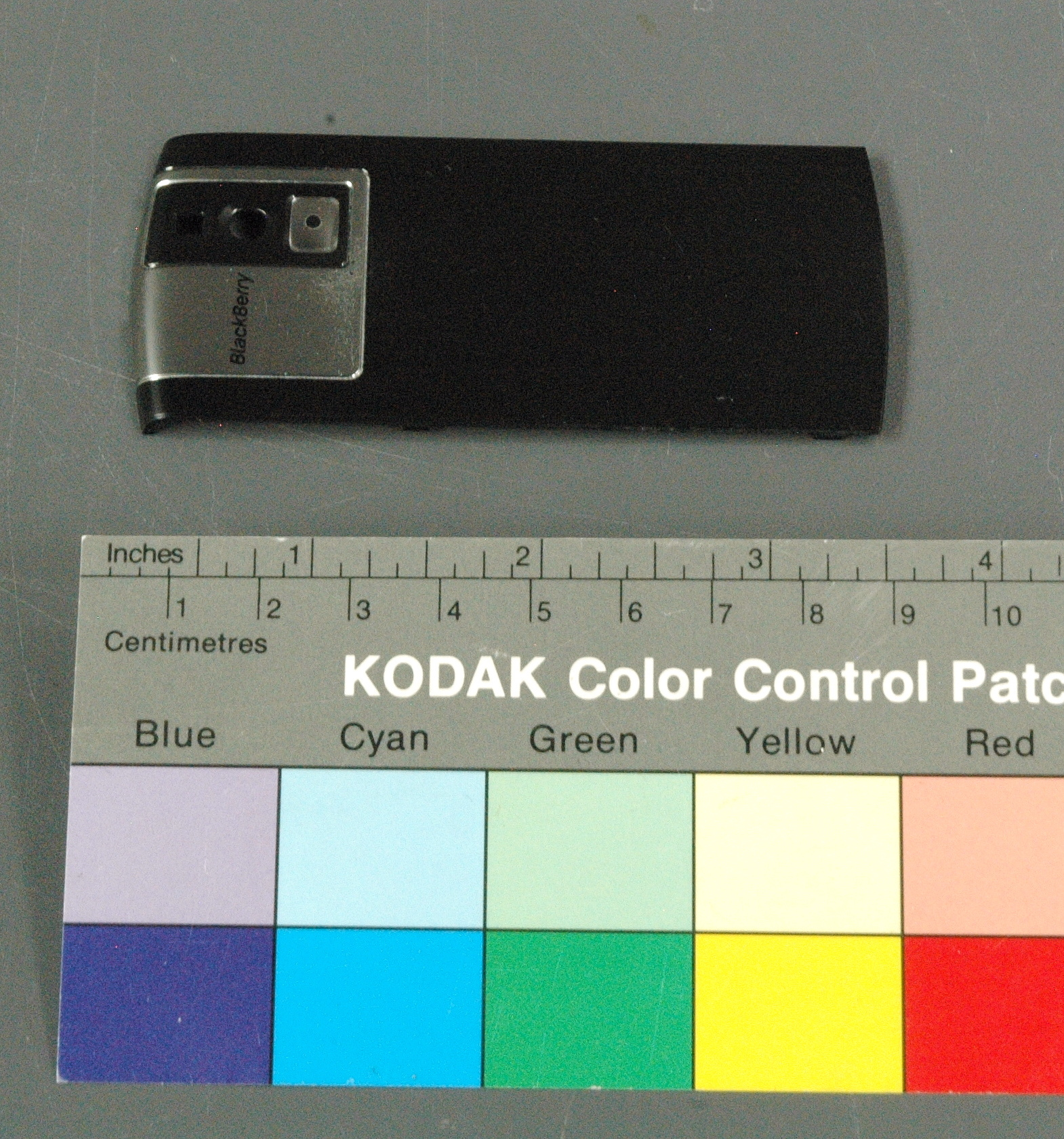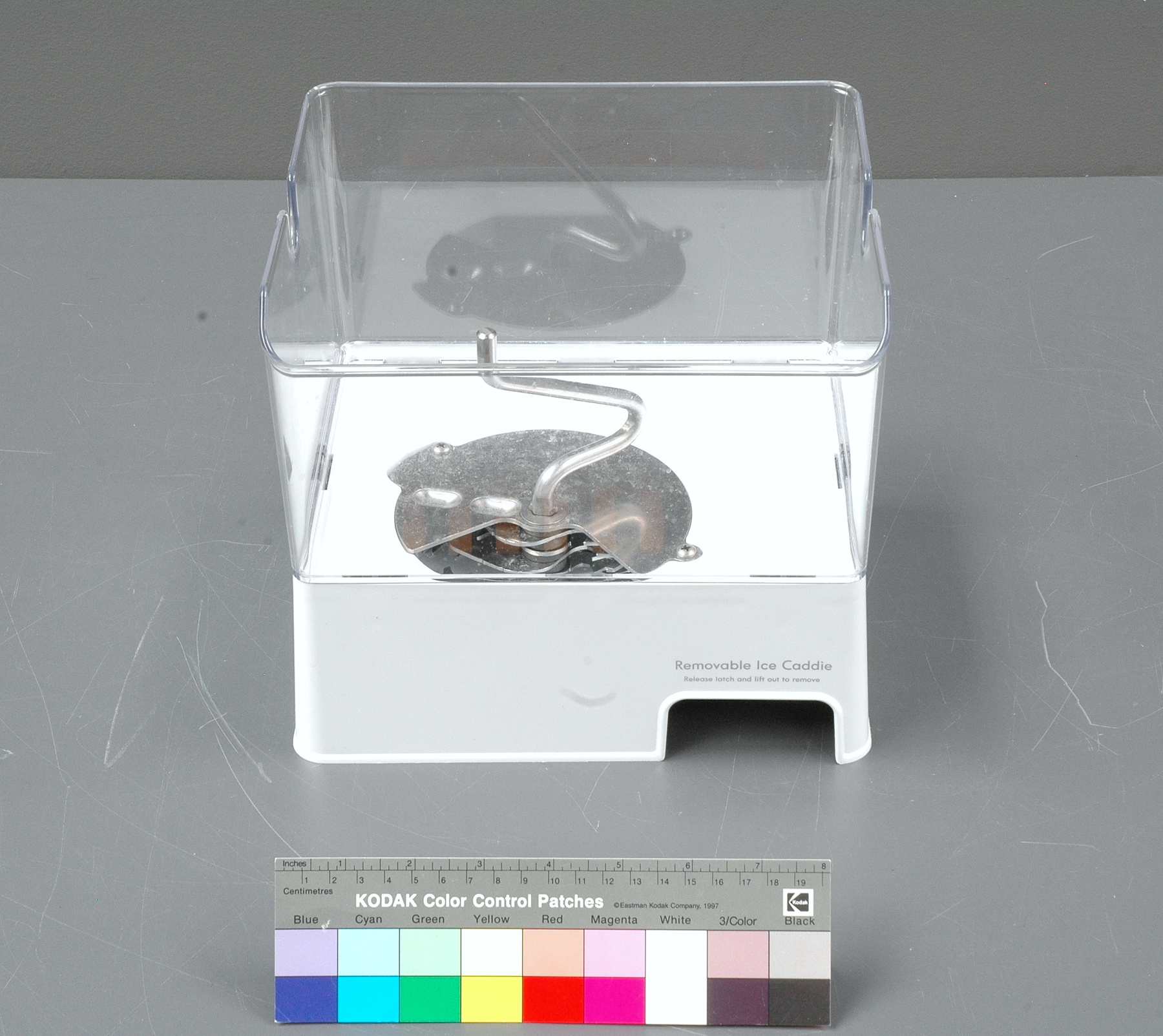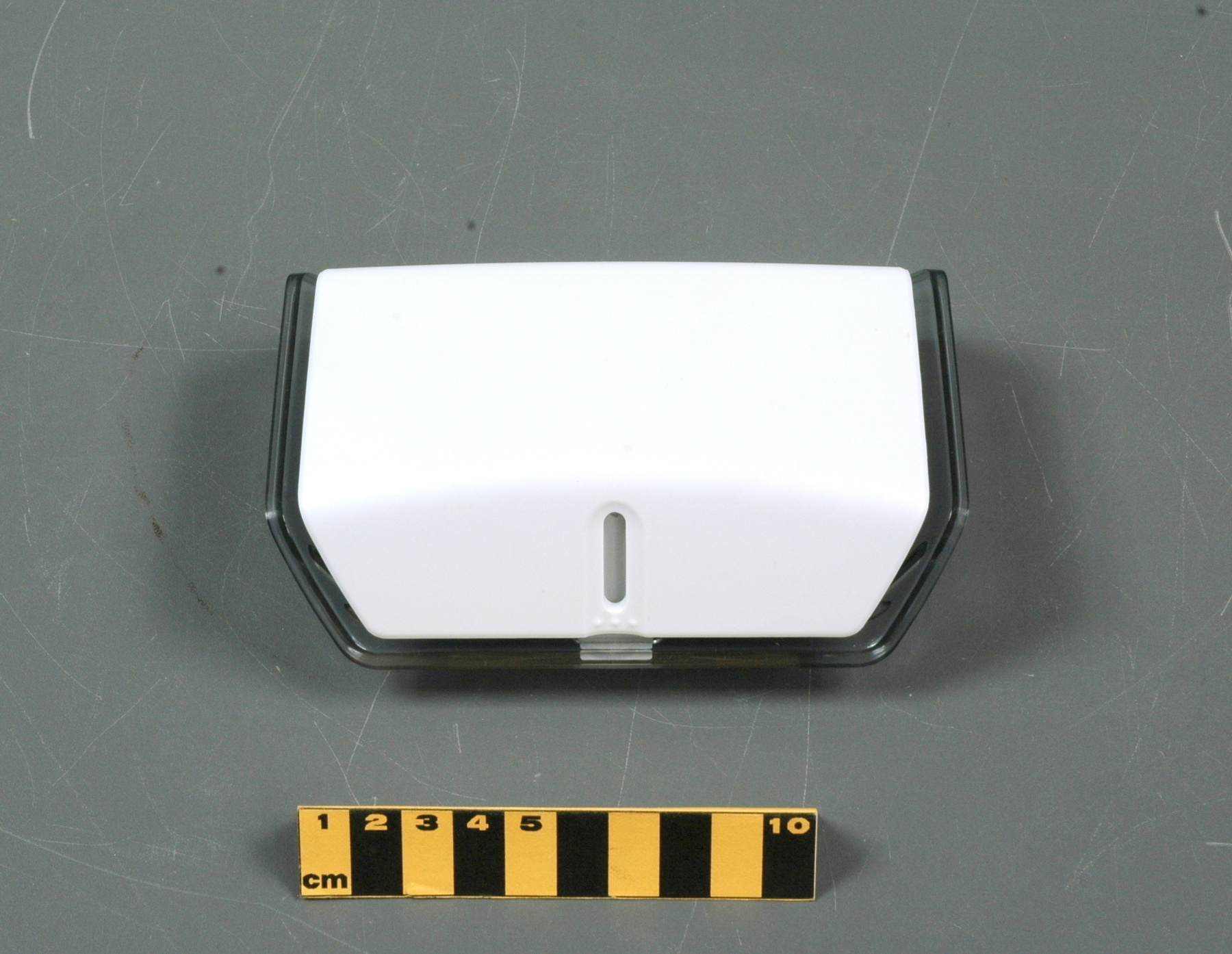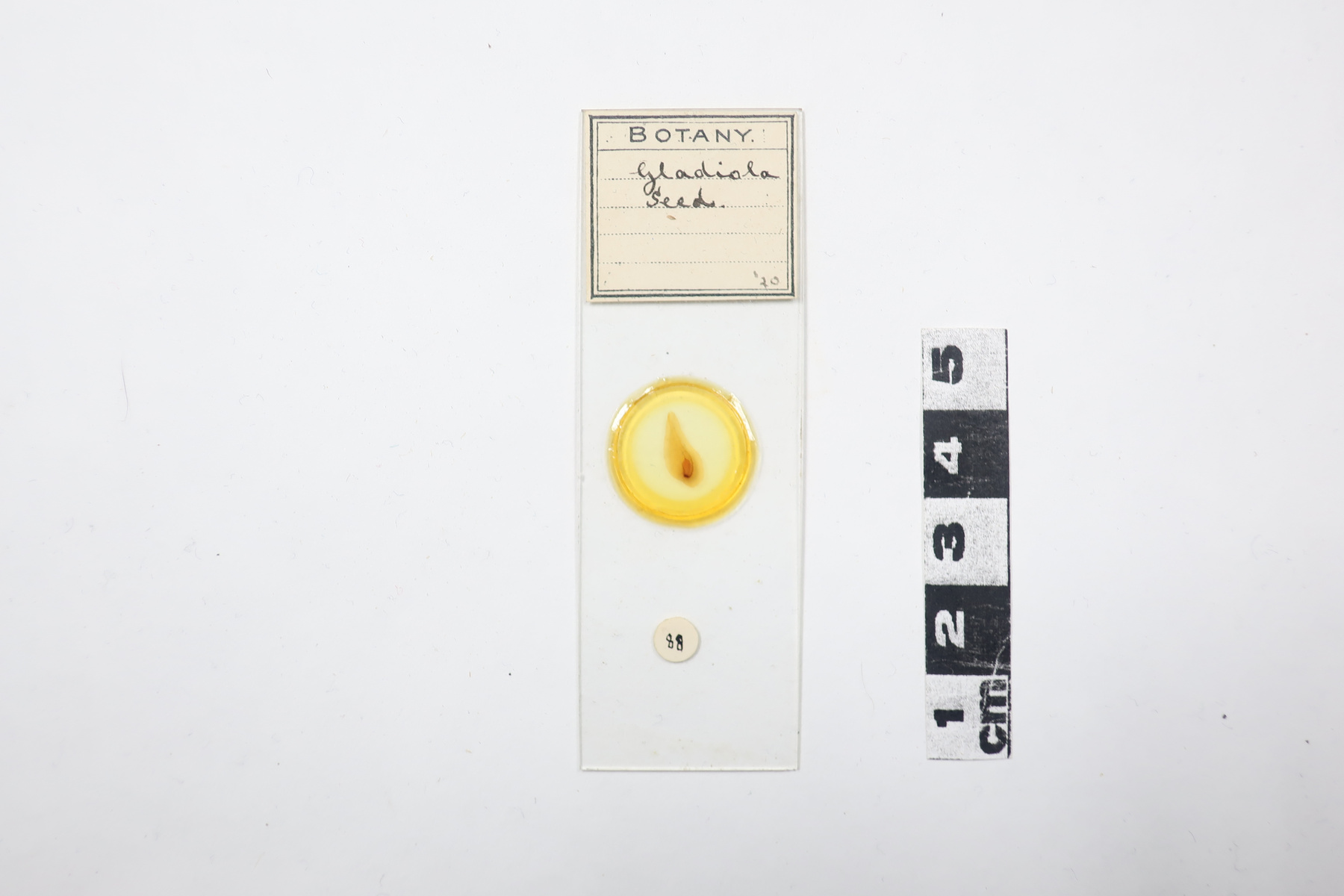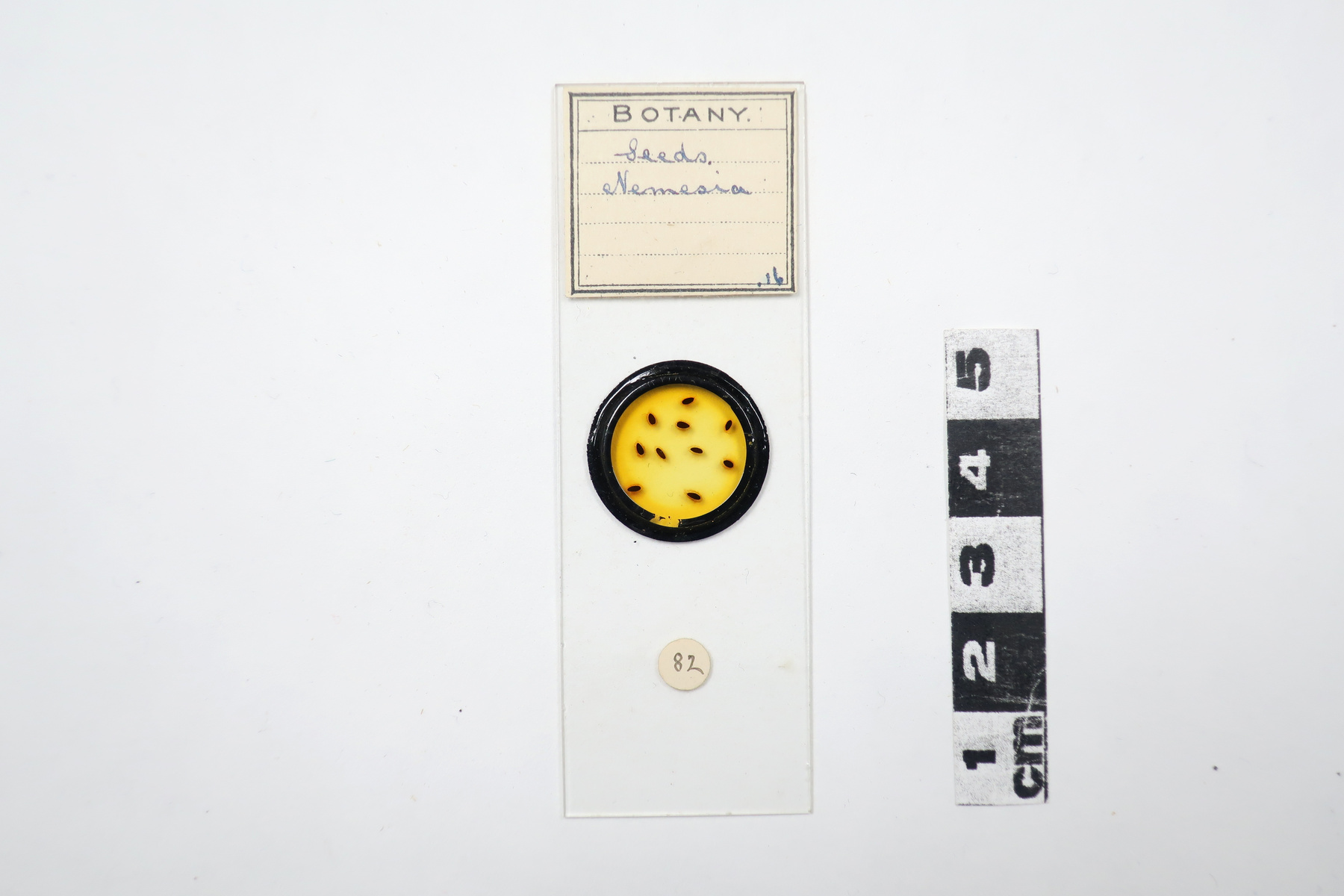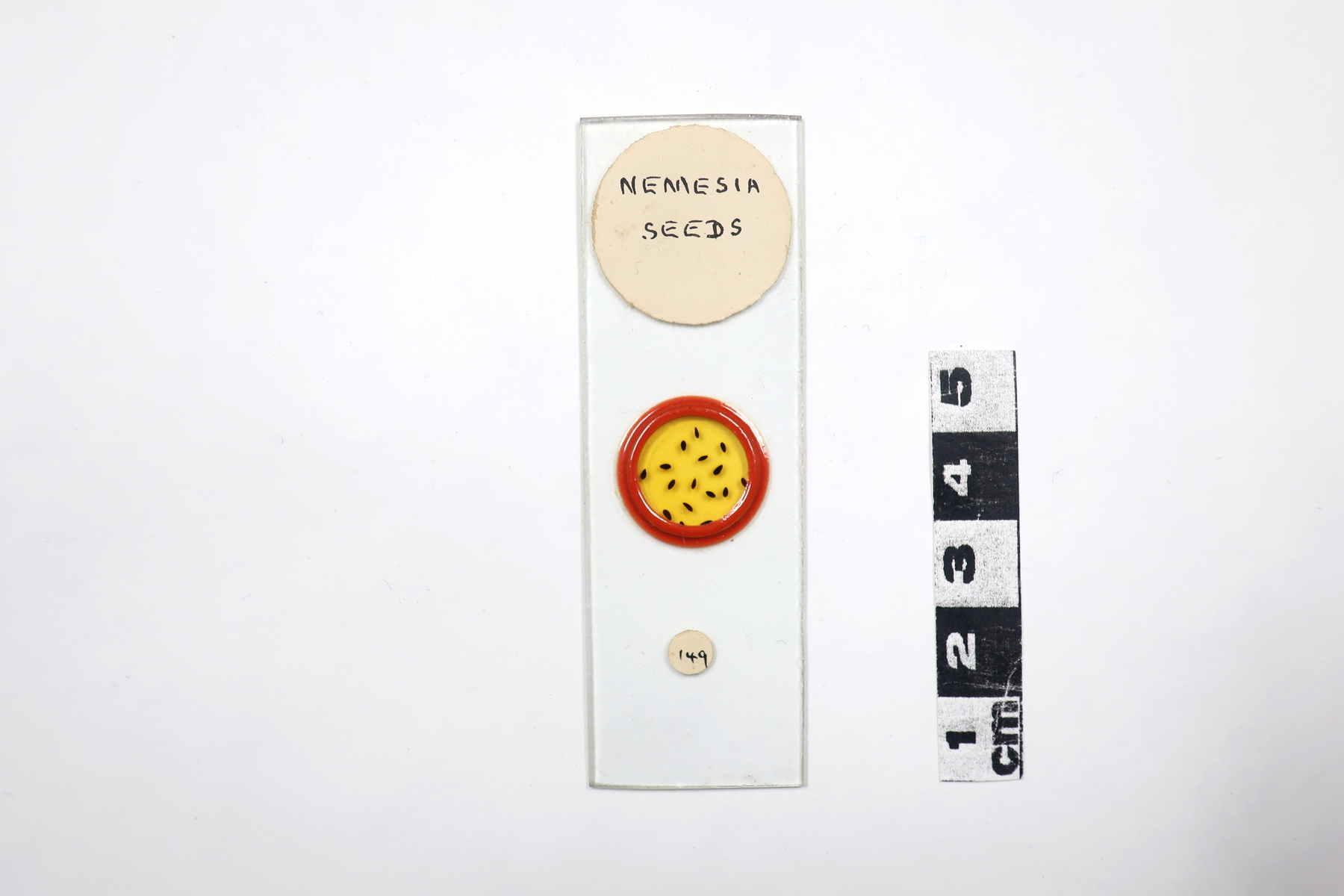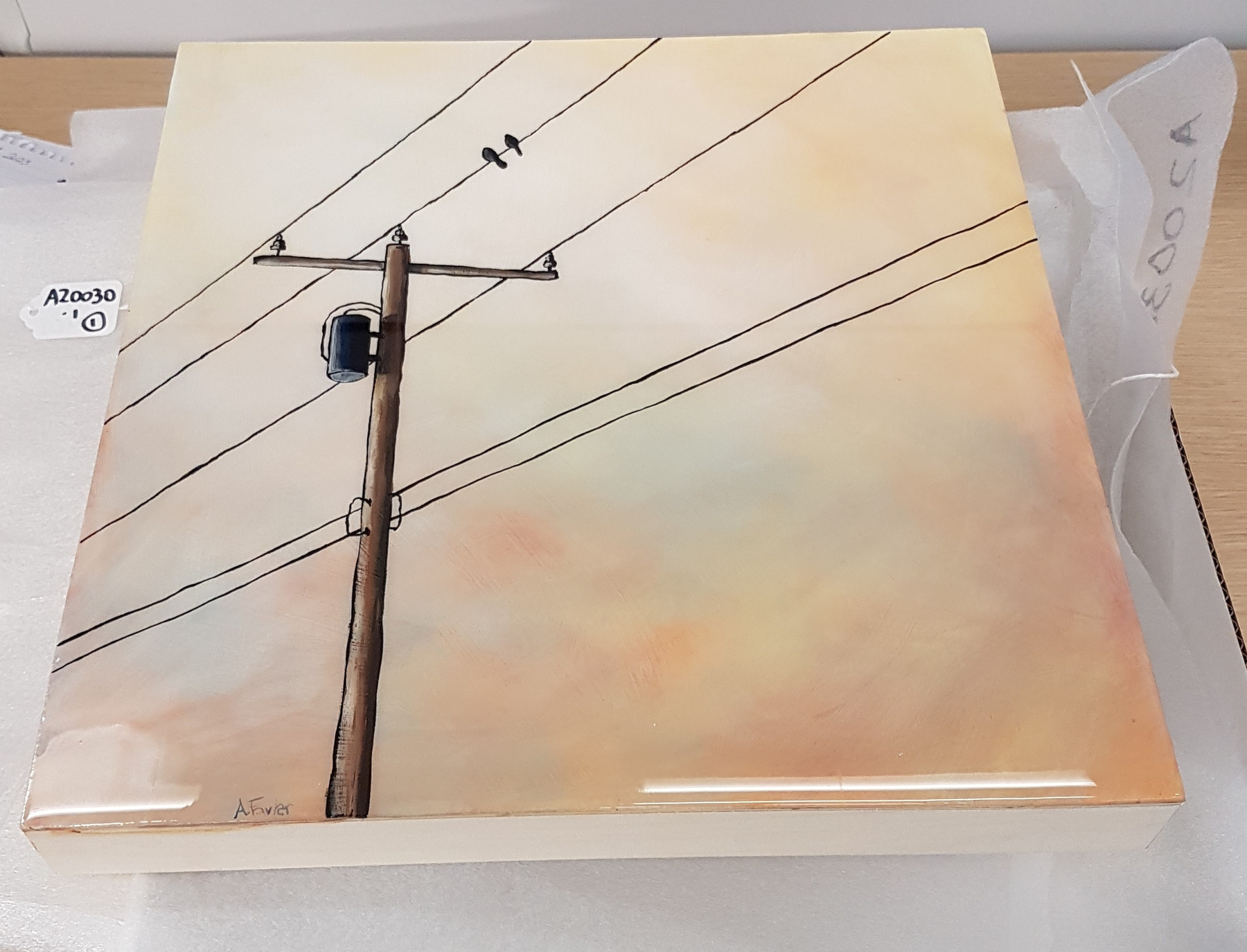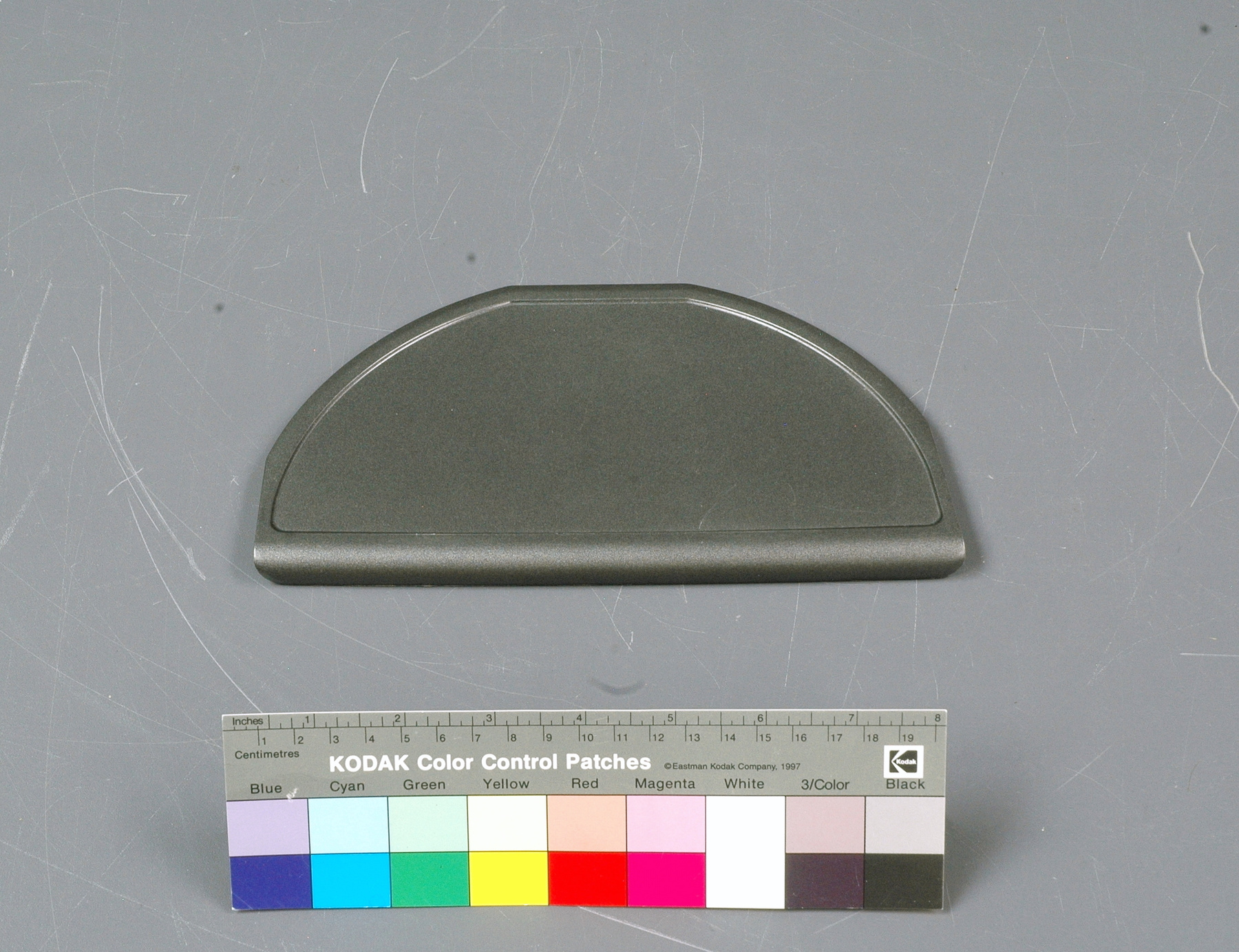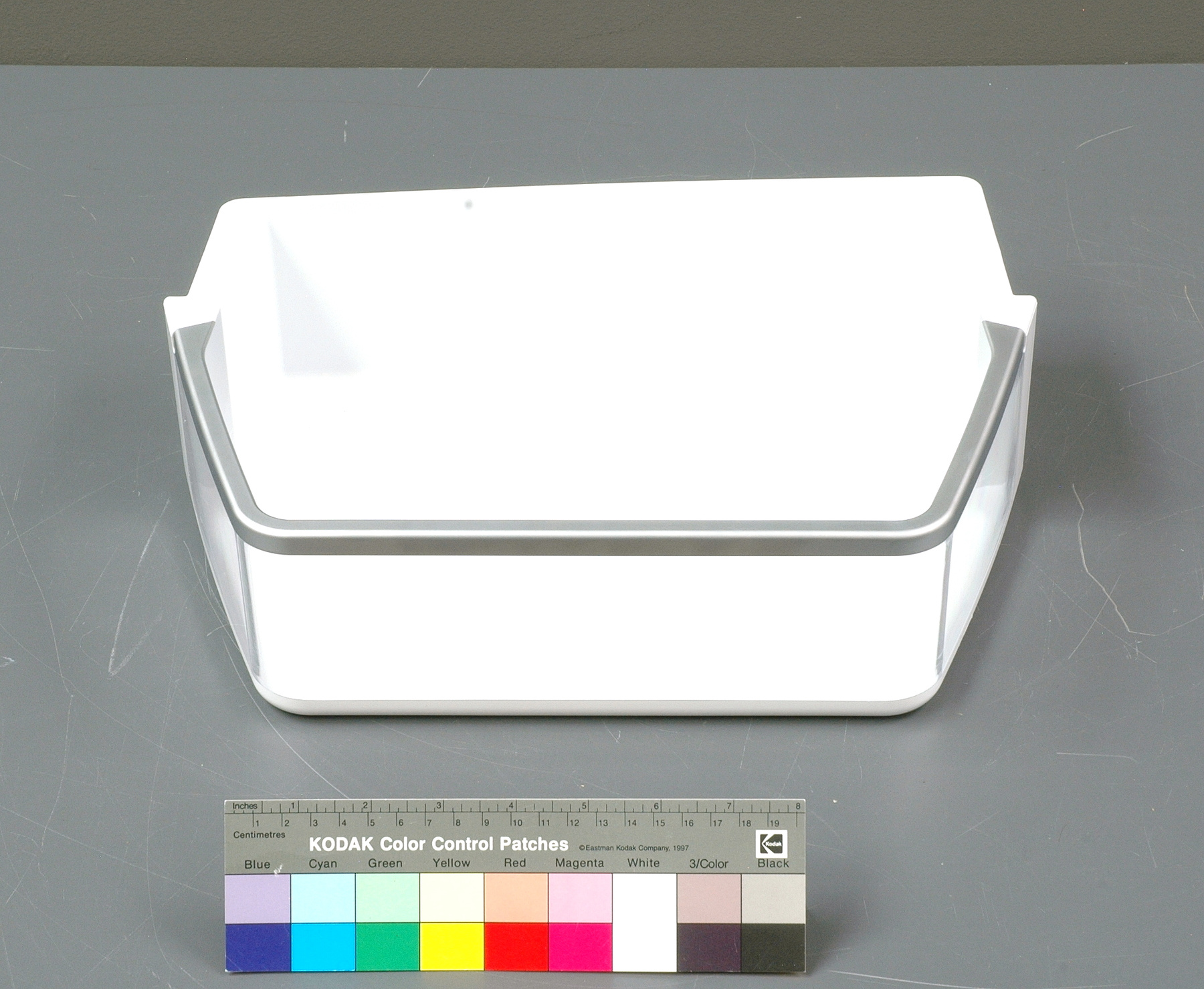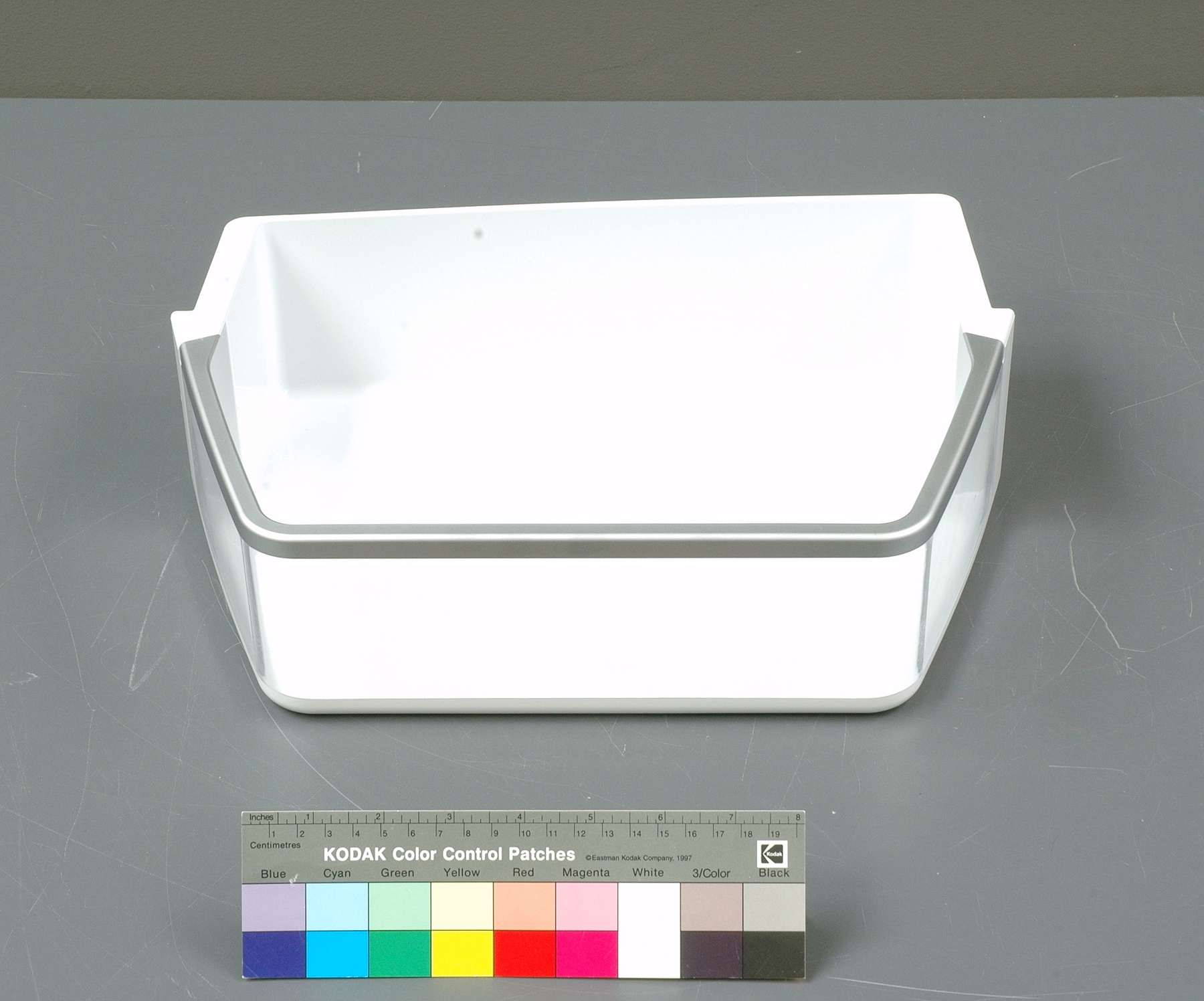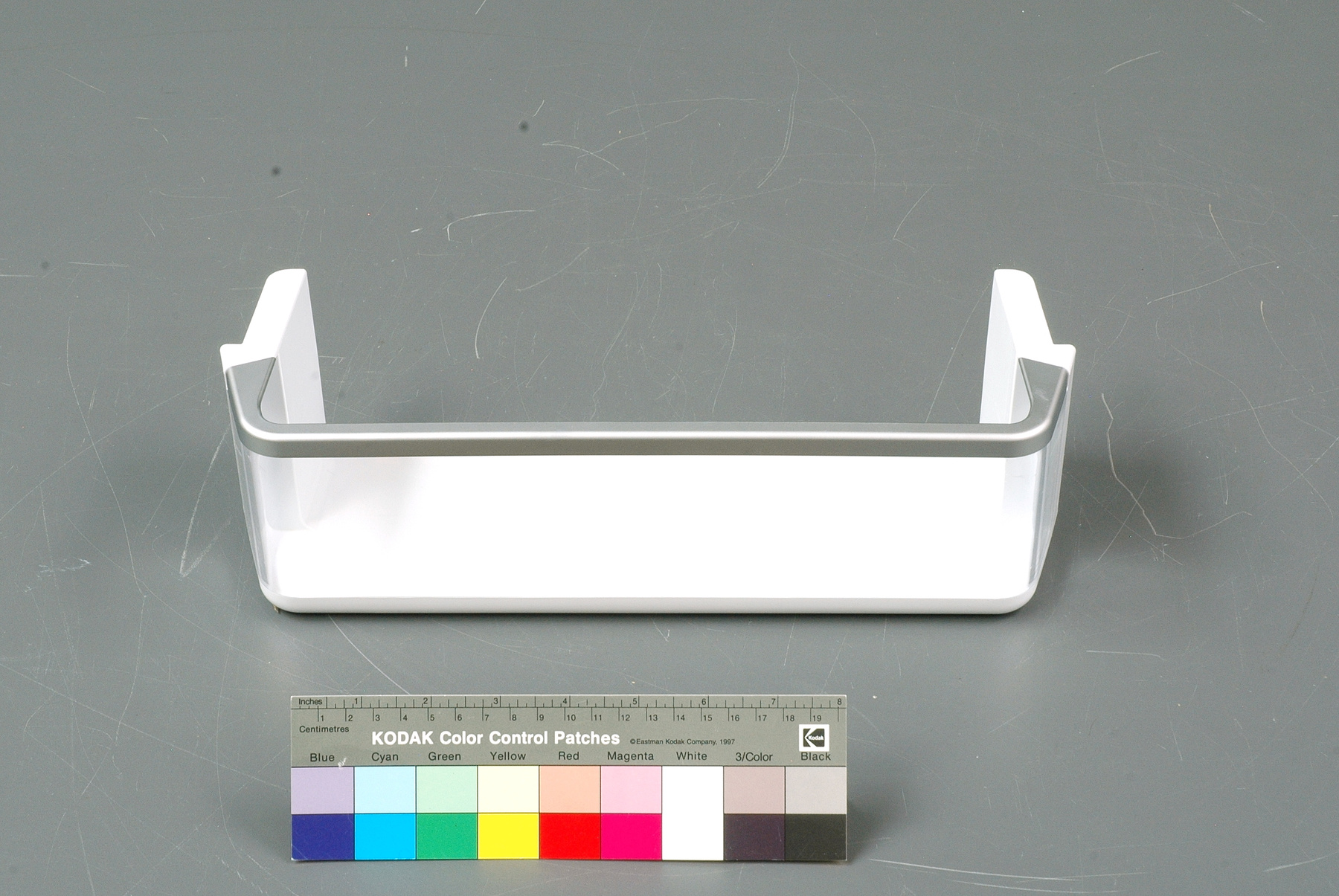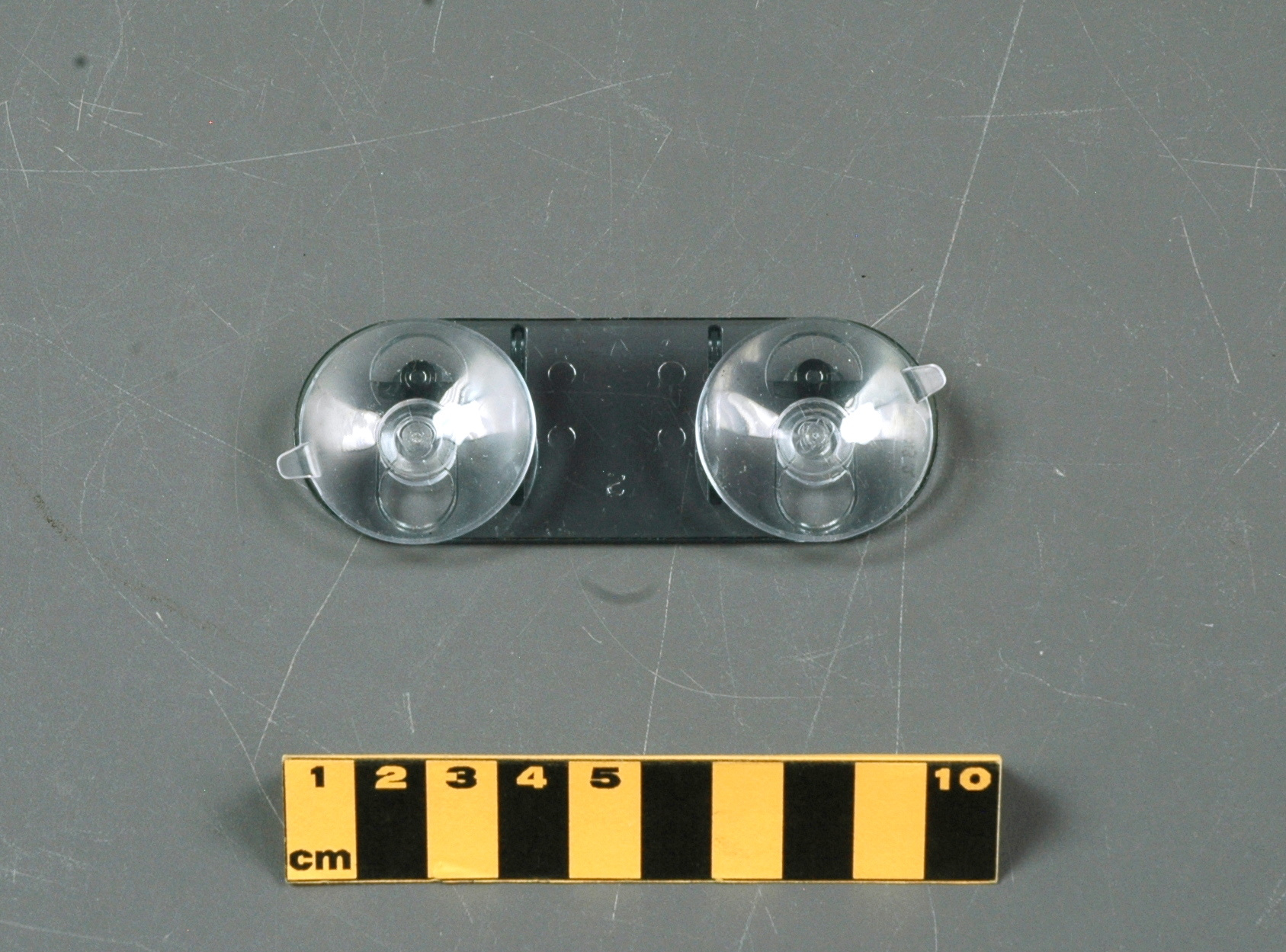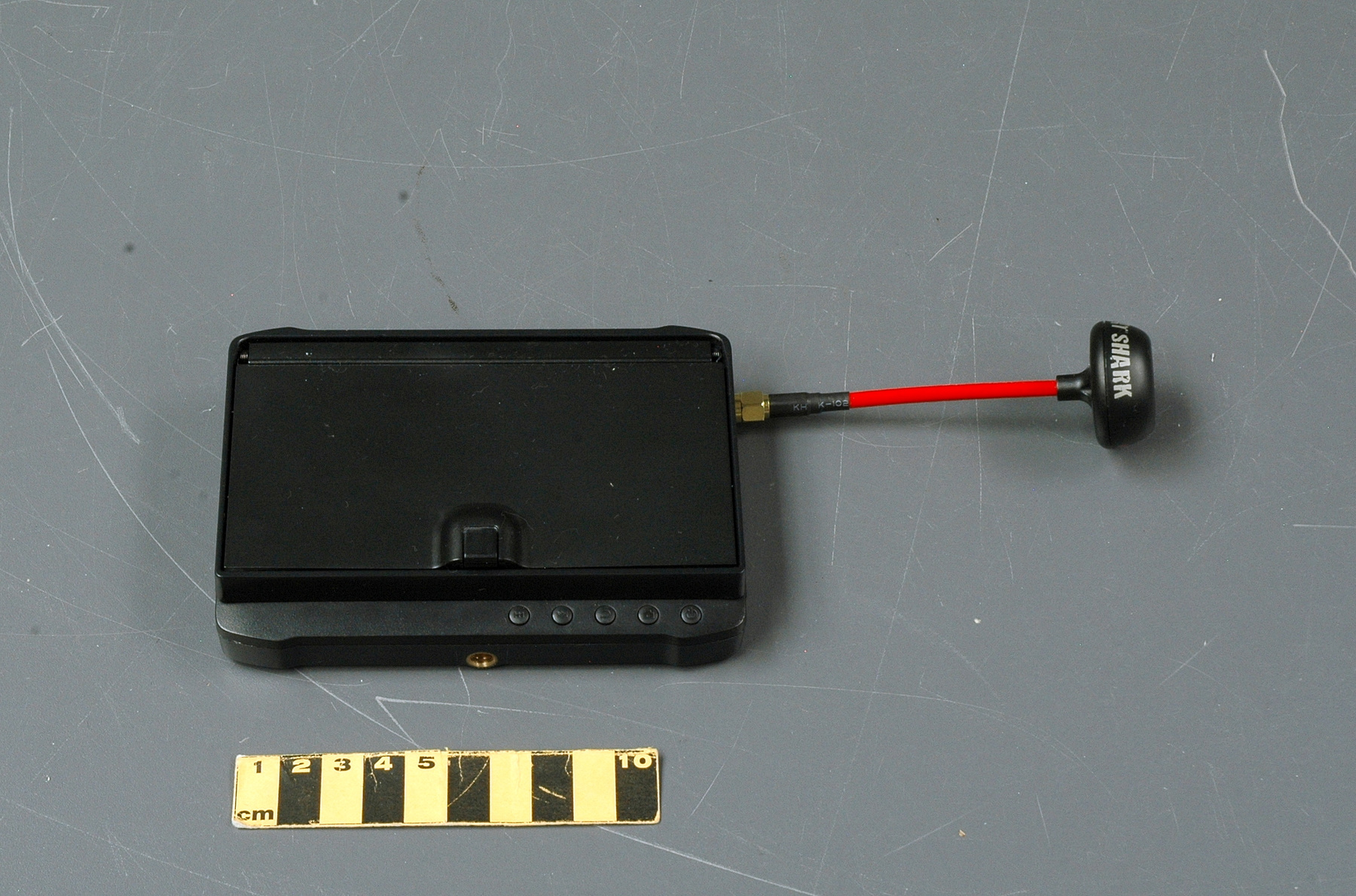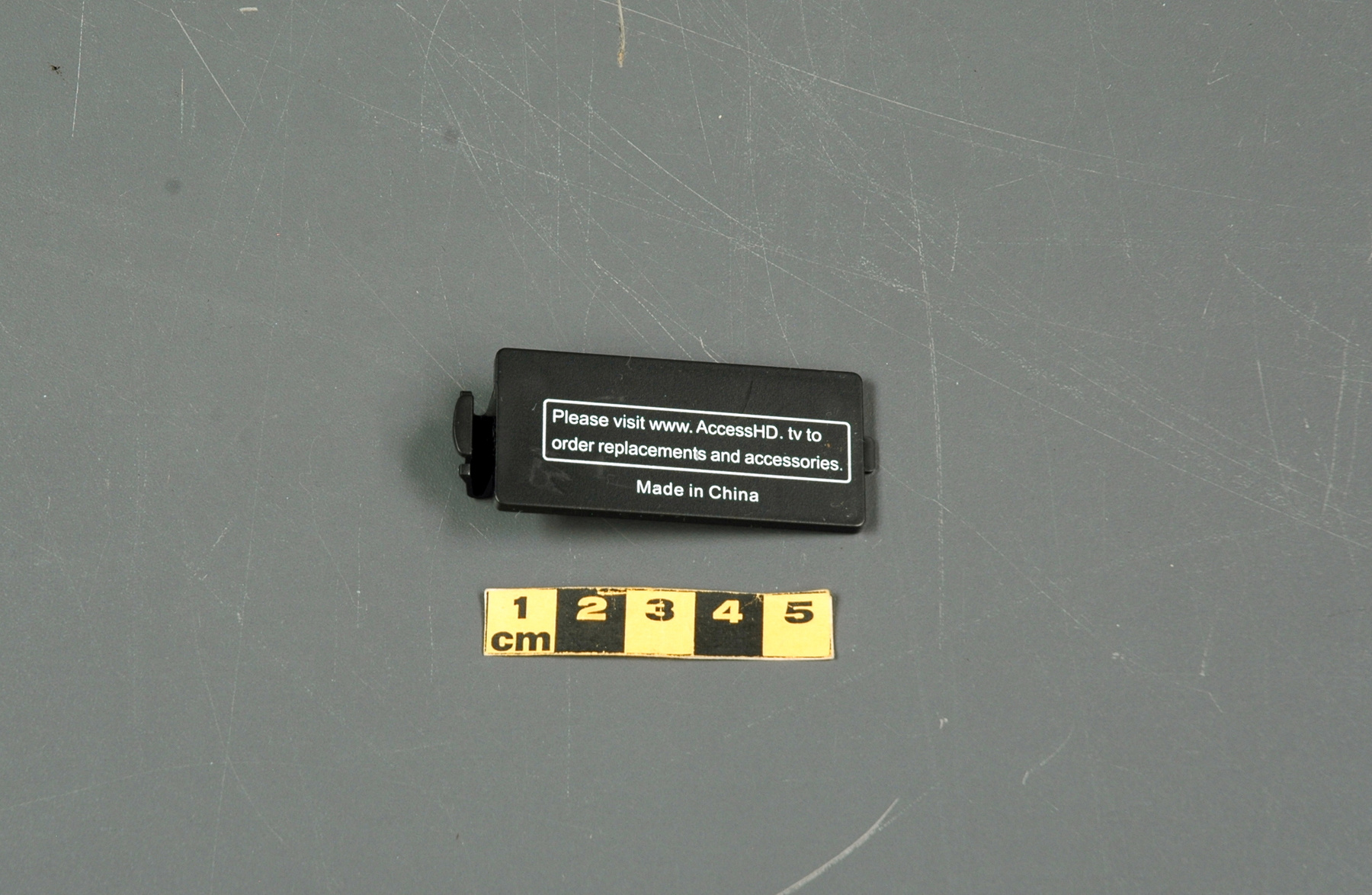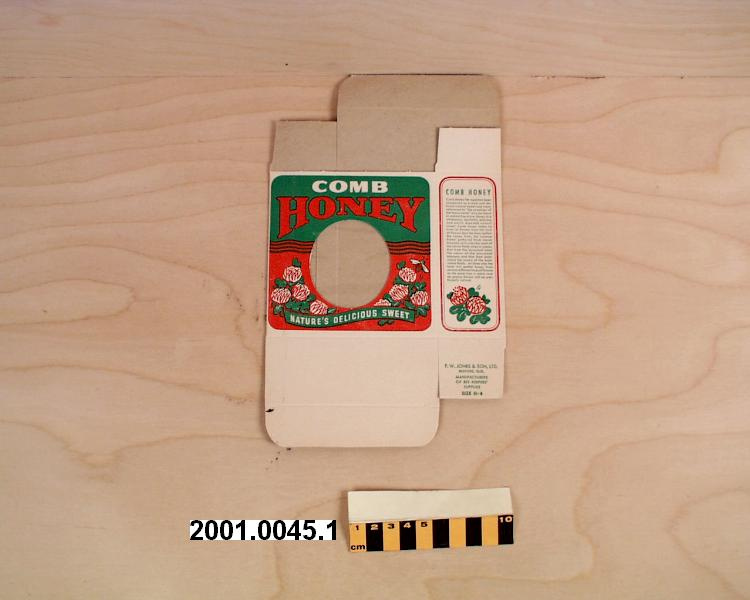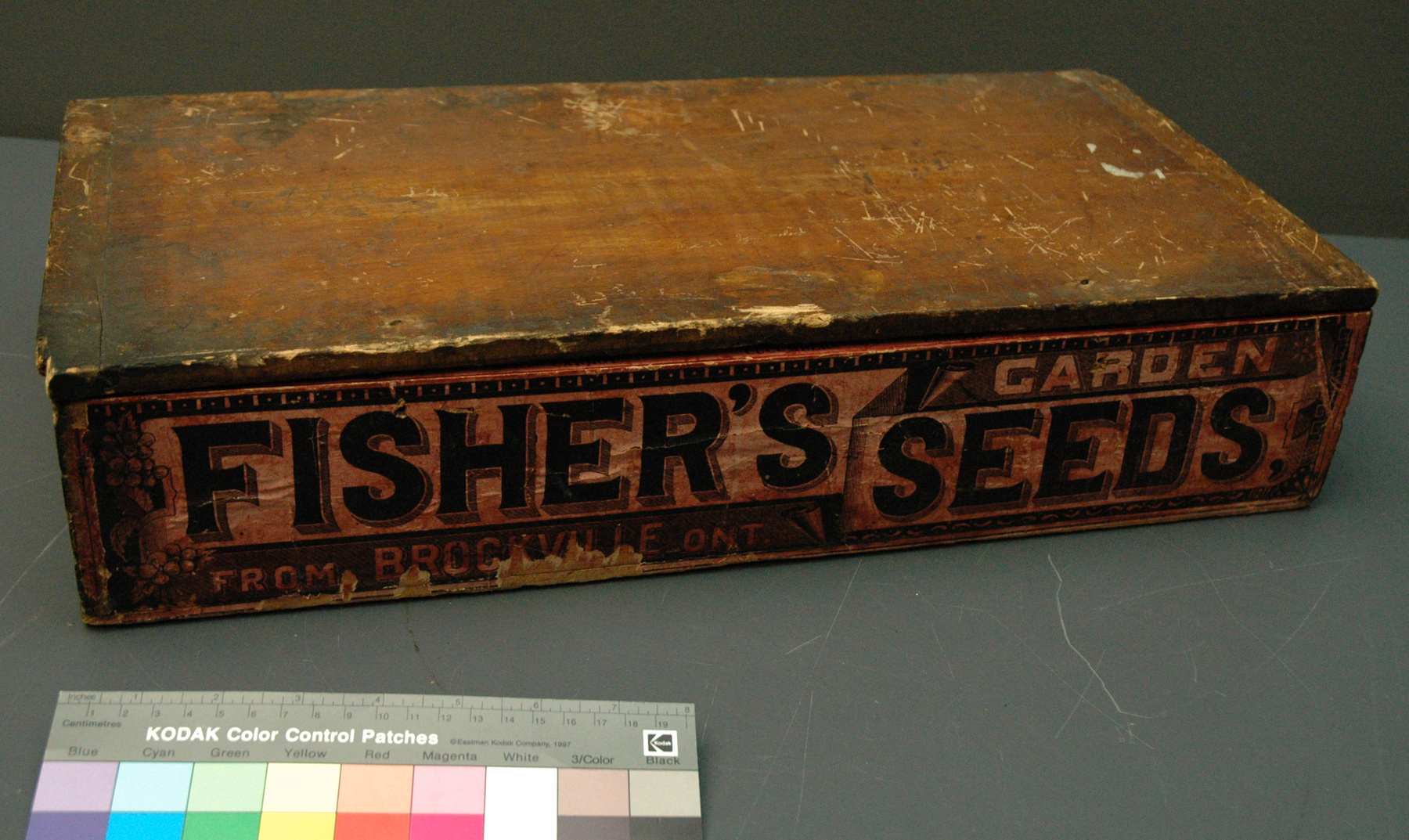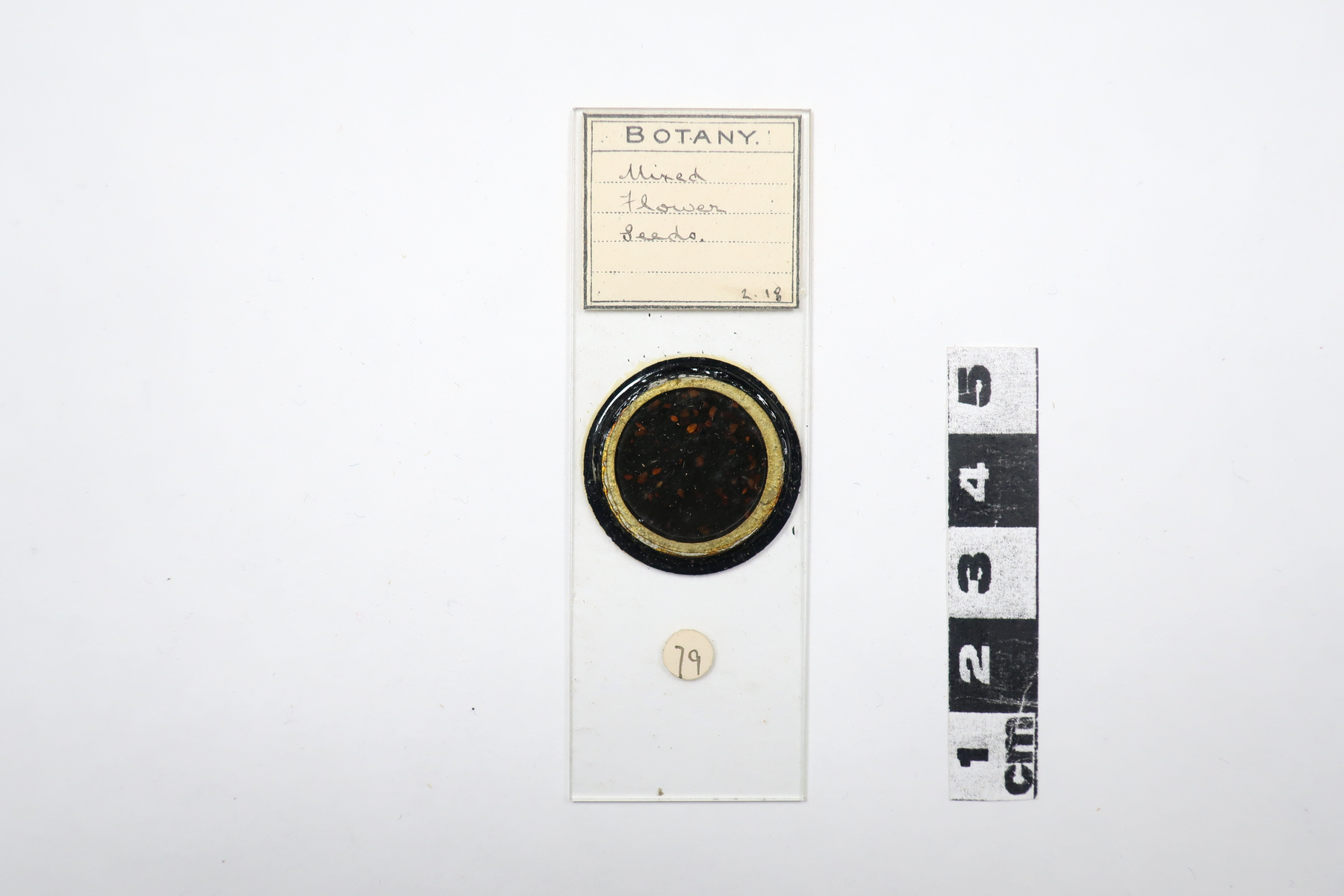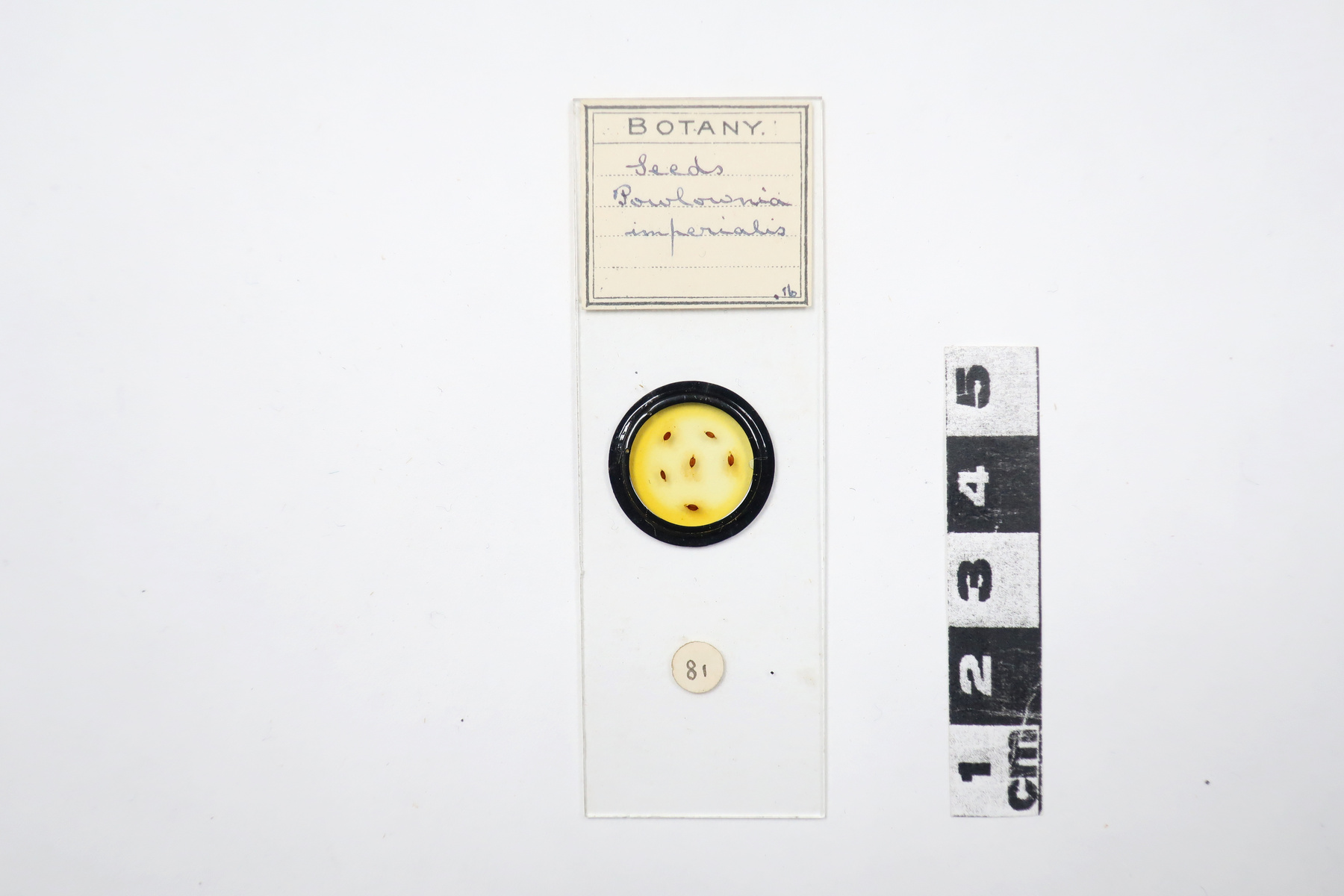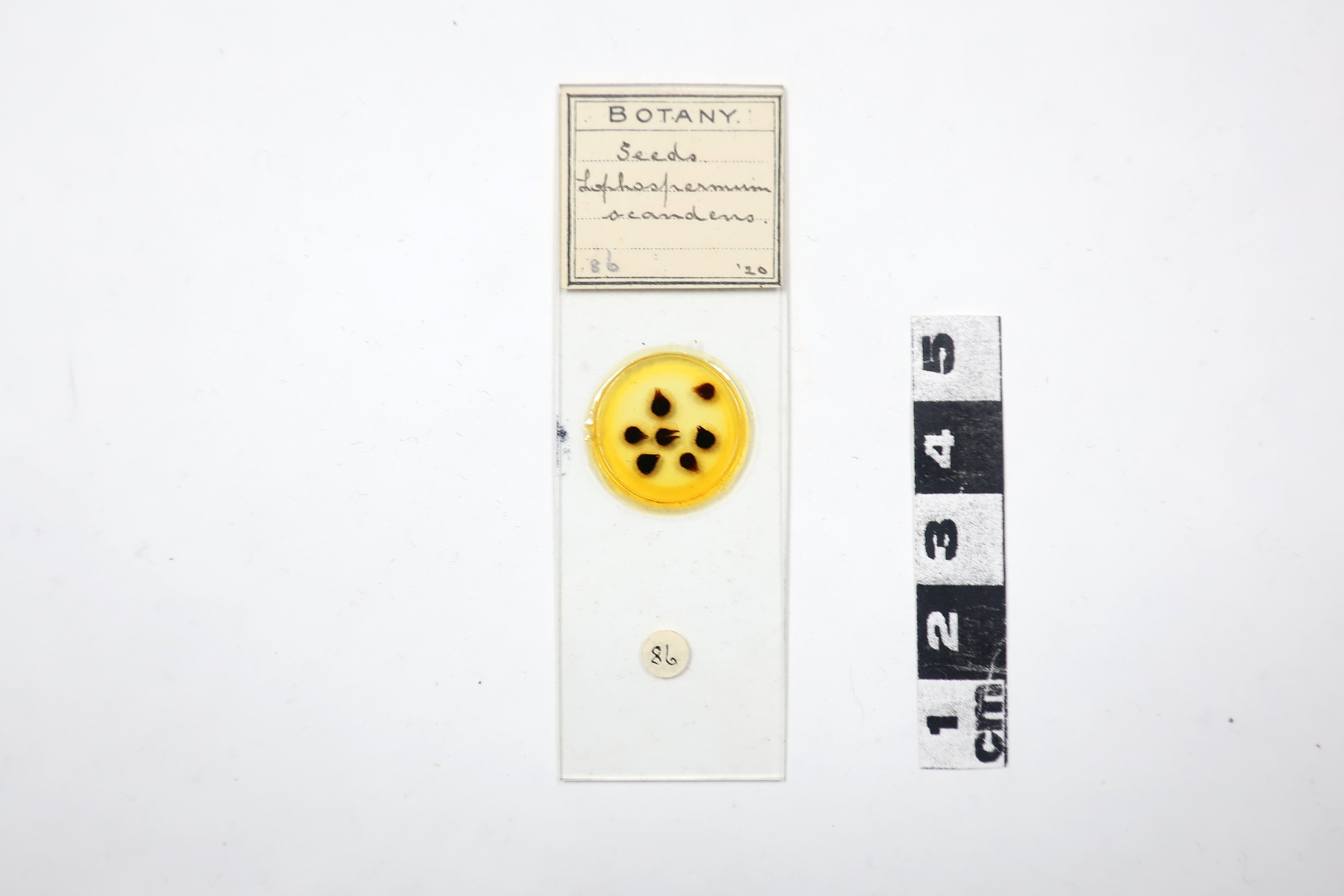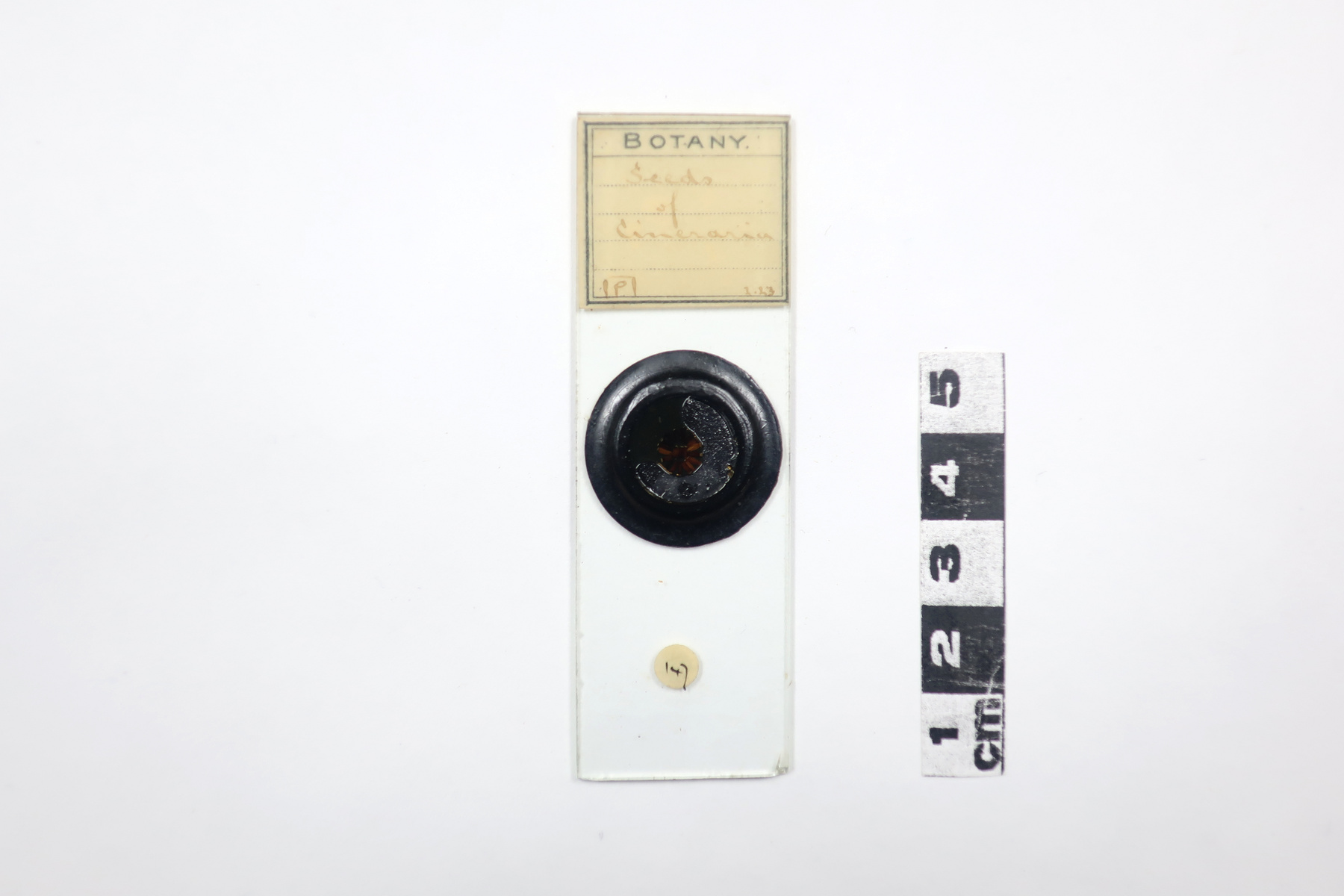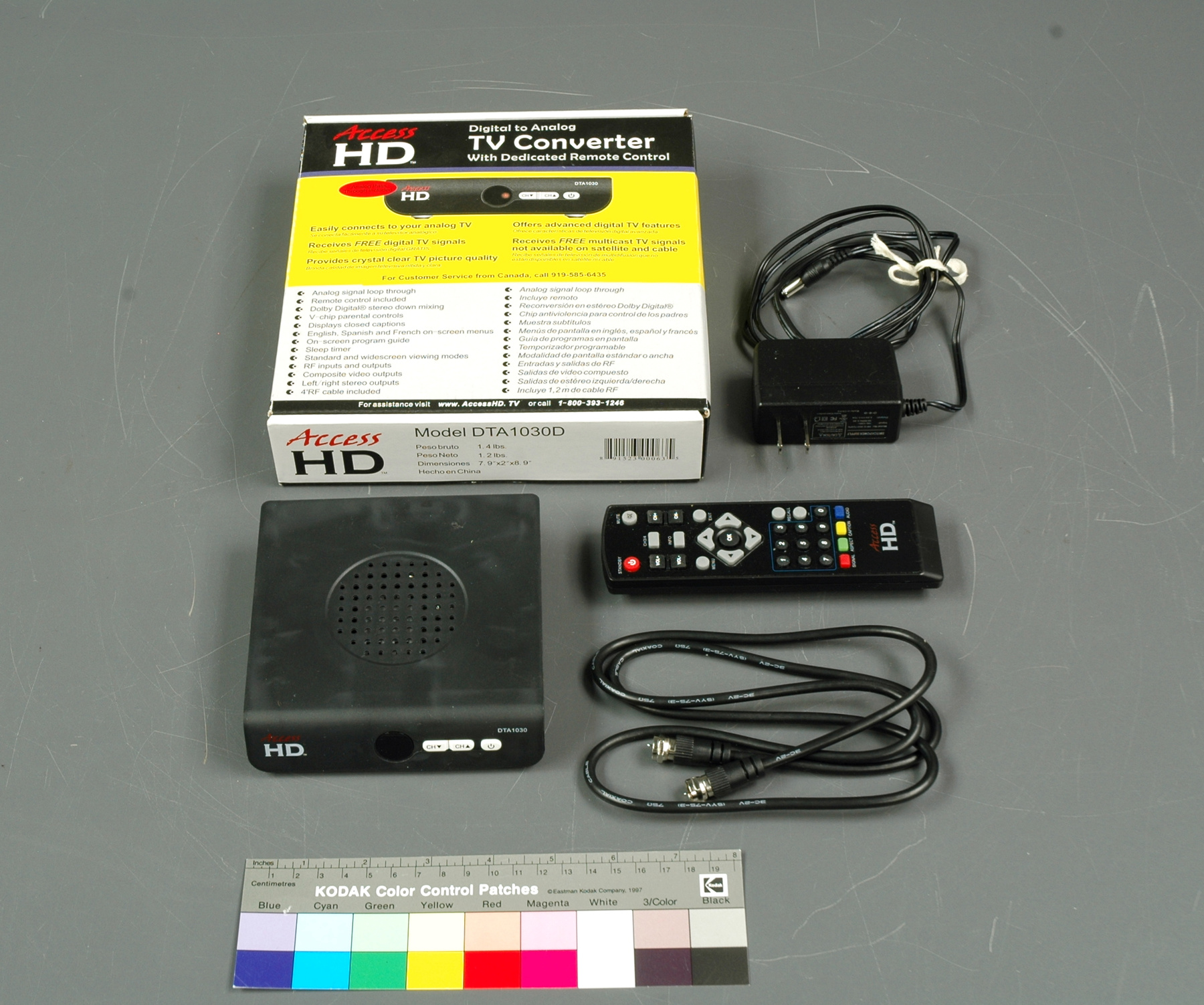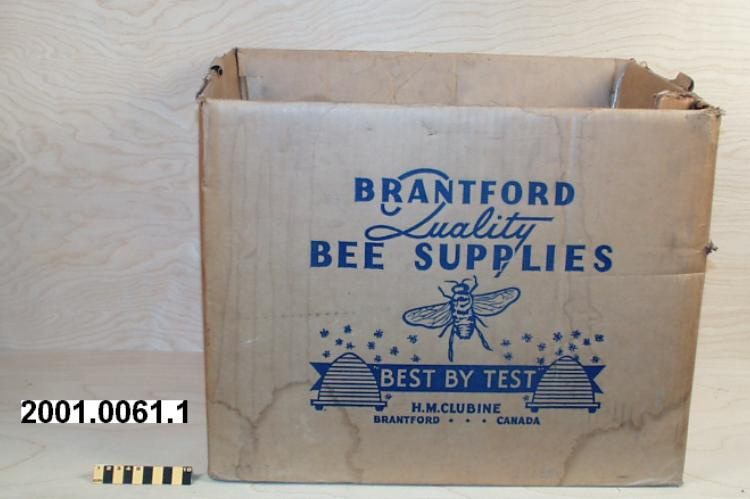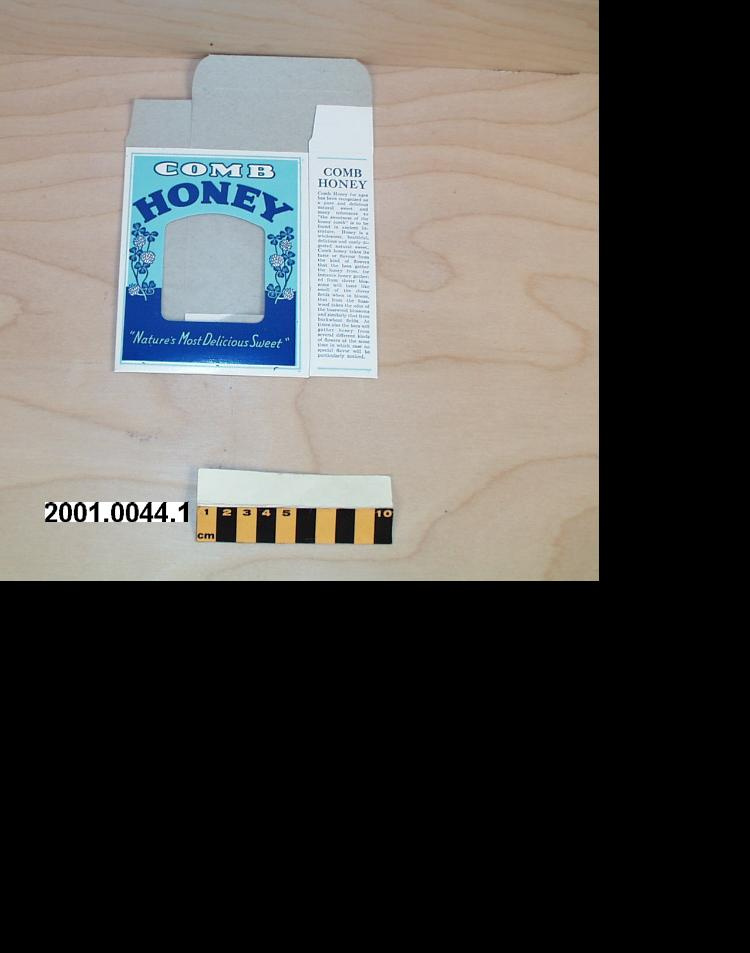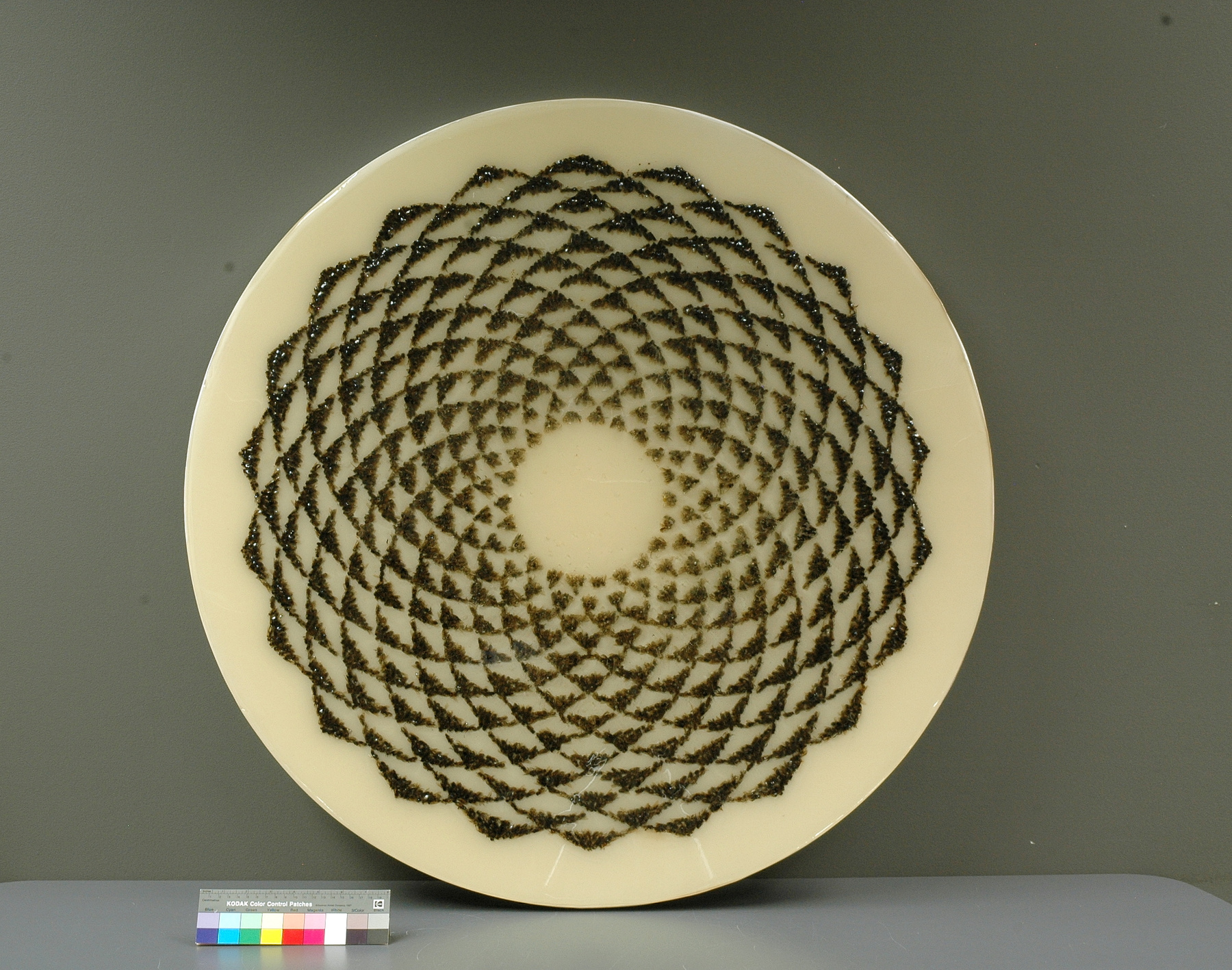Panneau en techniques mixtes
Utiliser cette image
Puis-je réutiliser cette image sans autorisation? Oui
Les images sur le portail de la collection d’Ingenium ont la licence Creative Commons suivante :
Copyright Ingenium / CC BY-NC-ND (Attribution-NonCommercial 4.0 International (CC BY-NC 4.0)
ATTRIBUER CETTE IMAGE
Ingenium,
2015.0125.001
Permalien:
Ingenium diffuse cette image sous le cadre de licence Creative Commons et encourage son téléchargement et sa réutilisation à des fins non commerciales. Veuillez mentionner Ingenium et citer le numéro de l’artefact.
TÉLÉCHARGER L’IMAGEACHETER CETTE IMAGE
Cette image peut être utilisée gratuitement pour des fins non commerciales.
Pour un usage commercial, veuillez consulter nos frais de reproduction et communiquer avec nous pour acheter l’image.
- TYPE D’OBJET
- Bees and epoxy on wood panel/conceptual art
- DATE
- 2013
- NUMÉRO DE L’ARTEFACT
- 2015.0125.001
- FABRICANT
- Hatton, Sarah
- MODÈLE
- Circle 1
- EMPLACEMENT
- Quebec, Canada
Plus d’information
Renseignements généraux
- Nº de série
- S/O
- Nº de partie
- 1
- Nombre total de parties
- 1
- Ou
- S/O
- Brevets
- S/O
- Description générale
- Wooden panel base with bees applied in a geometric design on its proper front surface, covered with clear epoxy resin
Dimensions
Remarque : Cette information reflète la taille générale pour l’entreposage et ne représente pas nécessairement les véritables dimensions de l’objet.
- Longueur
- S/O
- Largeur
- S/O
- Hauteur
- S/O
- Épaisseur
- 3,3 cm
- Poids
- S/O
- Diamètre
- 91,5 cm
- Volume
- S/O
Lexique
- Groupe
- Agriculture
- Catégorie
- Commémoratif
- Sous-catégorie
- S/O
Fabricant
- Ou
- Hatton
- Pays
- Canada
- État/province
- Quebec
- Ville
- Inconnu
Contexte
- Pays
- Canada
- État/province
- Inconnu
- Période
- Inconnu
- Canada
-
“Circle 1” is a work of art by Canadian artist Sarah Hatton. She was born in Wolverhampton, England in 1976 and earned a BA of Fine Art from Queen’s University in 1999 and a Master of Fine Arts from the University of Calgary in 2001. Hatton describes her work as an exploration of “longing, transition, mortality, and human connections with nature.” She lives in Chelsea, Quebec. Hatton is also a beekeeper and began producing “Bee Works” after a frost killed all the bees in one of her colonies. Struck by this loss, she made 10 circular artworks, or “mandalas” as she describes them, in 2013. These works are constructed of dead bees arranged in complex patterns and preserved in thick resin on wood panels. Hatton chose patterns found in nature, including the Fibonacci sequence, which mathematically describes the spiraling structures of pinecones, sea shells, and, in the case of “Circle 1,” sunflowers. The resulting works are striking: they produce optical illusions of movement and can induce vertigo, a sensation that Hatton likens to the bees’ inability to navigate after being exposed to neonicotinoid pesticides, a particular context addressed by this series. Neonicotinoids are a class of pesticide first introduced in the 1990s. In the past 25 years, they become one of the most widely used pesticides in the world. Neonicotinoids affect central-nervous-system functioning, killing or paralyzed insects exposed to them. Neonicotinoids may be sprayed, but the most popular application, introduced in 2004, is as a seed coating. In North America, neonicotinoid-coated seeds prevail in corn and soybean plantings, the major crops of the continent’s central region. This widespread preventative use of neonicotinoids has become controversial. Neonicotinoid compounds are water soluble and environmentally persistent, and environmental scientists have linked their “prophylactic” use to adverse impacts on pollinators, birds, earthworms, and aquatic invertebrates. Preventative use of neonicotinoids has also drawn critique because it runs counter to Integrated Pest Management (IPM). IPM favours selective and targeted pest-treatment programs, and emerged after Rachel Carson in Silent Spring (1962) provoked debate about indiscriminate pesticide use. As well, neonicotinoid use is being questioned from an economic perspective. In 2014, the United States Environmental Protection Agency (EPA) reported that there “are no clear or consistent economic benefits of neonicotinoid seed treatments in soybeans.” (EPA 2014) In Canada, Ontario has become a locus for this controversy. Ontario grows 70% of all Canadian soybean and 68% of corn. Nearly 100% of corn seed and almost 60% of soybean seed available in Ontario are neonicotinoid treated. The pressure to limit this widespread neonicotinoid use has come largely from Ontario beekeepers. Over the last several years, they have experienced high rates of winter beehive loss. Rates have ranged from 38% loss in 2012 to 58% in 2014, with 15% considered a normal rate of hive loss. Large number of bees are now also reported dying in the summer and fall. In 2014, the Province of Ontario became the first North American jurisdiction to limit neonicotinoid use. The legislation came into effect on July 1, 2015 and is intended to curb the prophylactic applications of neonicotinoids. By 2017, all farmers wanting to sow neonicotinoid-treated seeds will have to show evidence of insect problems before being allowed to use them. Ontario’s move to limit neonicotinoid use has been resisted by industry. Crop Life Canada, an industry association representing the “plant science industry,” claims that there is no “absolutely no scientific evidence” to justify the legislation, claiming that neonicotinoids are “one of the safest insecticides ever developed.” This debate continues in the pages of Canada’s agricultural press, where both sides contend that “science” is on their side. “Circle 1” is a powerful artwork made from unconventional materials. It speaks to—and arises out of—contemporary environmental issues related to pollinator declines and neonicotinoid use. It also serves to document debates over the role of science in agriculture. “Circle 1” was presented in a solo exhibition of “Bee Works” mounted at the Visual Voice Art Gallery in Montreal in the winter of 2015. Hatton is currently negotiating the exhibition of “Bee Works” with other art galleries in Canada and the United States, which would entail the loan and continuing circulation of “Circle 1.” (From Acquisition Proposal, see Ref. 1) - Fonction
-
“Circle 1” functions, through the medium of art, as a reflection and commentary on the plight of bees and other pollinators in the context of colony collapse disorder, pesticide use, and other environmental risks. (From Acquisition Proposal, see Ref. 1) - Technique
-
“Circle 1” may be defined as “conceptual art:” art made using materials and methods not traditionally deployed in painting, sculpture, or photography. Marcel Duchamp is credited with launching conceptual art when he attempted to display a urinal in a New York exhibition in 1917. (Godfrey 1988) Conceptual artists have since used found or “readymades” in art: this approach is considered a critique of art, and has also been identified with wider social and political critiques. Hatton’s choice of bees fits within this tradition: she also shares some affinities with artists such as Mark Dion who use dead animals (typically taxidermied animals from natural-history museum collections) to produce installations or dioramas. These works contemplate the nature of museums and collections, and address concerns over biodiversity loss and environmental threats. (Dion 1997) In terms of materials, Hatton used bees from her own hives and received donations of dead bees from beekeepers in Canada and elsewhere. To draw the underlying patterns on the wood panel surfaces, Hatton used her father’s drafting set from his university engineering studies in the 1950s. (From Acquisition Proposal, see Ref. 1) - Notes sur la région
-
Inconnu
Détails
- Marques
- On the proper back, near the proper top: stamped in black ink "[logo] SUPPORT/ SURFACE/ Fabriqué à la main au Québec"/ Written below by hand: "36" [signed initials]"/ Label at proper top: "340mm to wire"/ Artist label near proper bottom: "SARAH HATTON/ Title: Circle 1/ 2013/ Honeybees (Apis mellifera), resin on panel./ 36" diameter circle/ Sarah Hatton [signature]/ [c] 2013 Sarah Hatton/ www.sarahhattonartist.com"
- Manque
- none
- Fini
- The base is a round panel of light coloured wood on the proper back, and finished in white around the outer edge. The proper front is largely covered in dark brown and yellow bees. The entire proper front, including the bees are covered in a resin which is light yellow in colour.
- Décoration
- S/O
FAIRE RÉFÉRENCE À CET OBJET
Si vous souhaitez publier de l’information sur cet objet de collection, veuillez indiquer ce qui suit :
Hatton, Sarah, Panneau en techniques mixtes, 2013, Numéro de l'artefact 2015.0125, Ingenium - Musées des sciences et de l'innovation du Canada, http://collections.ingeniumcanada.org/fr/id/2015.0125.001/
RÉTROACTION
Envoyer une question ou un commentaire sur cet artefact.
Plus comme ceci
